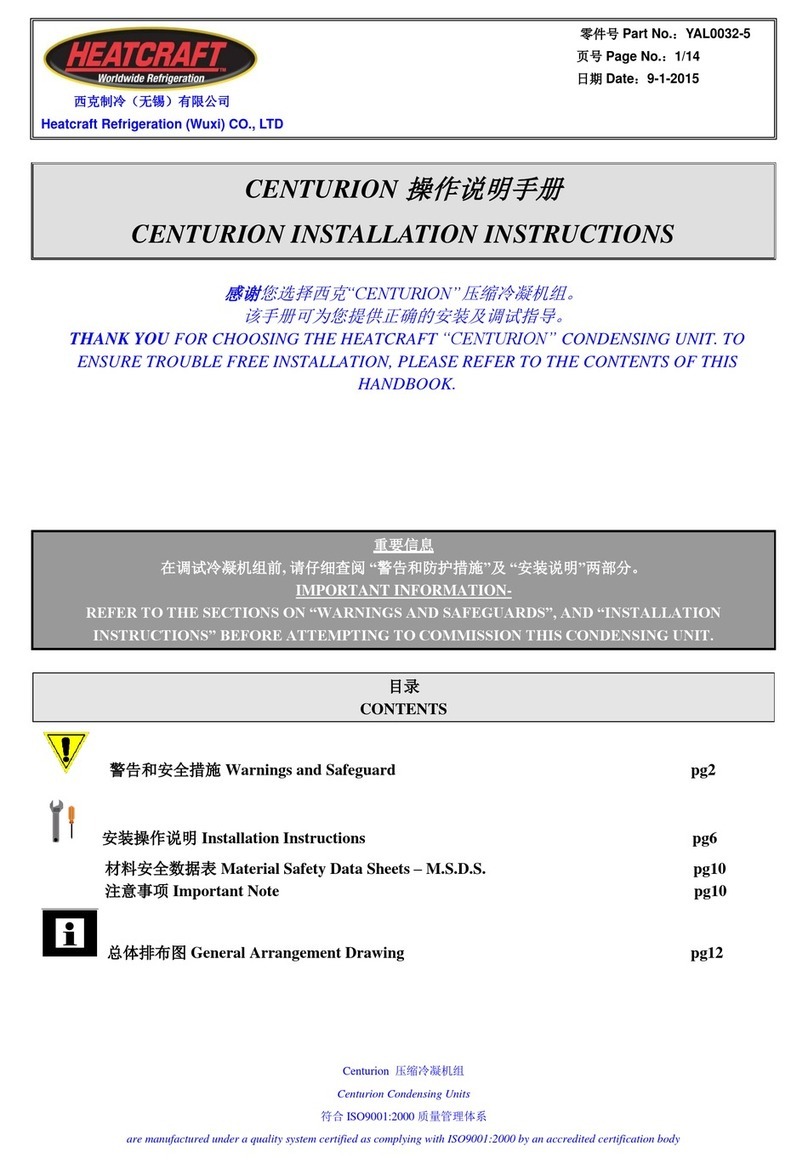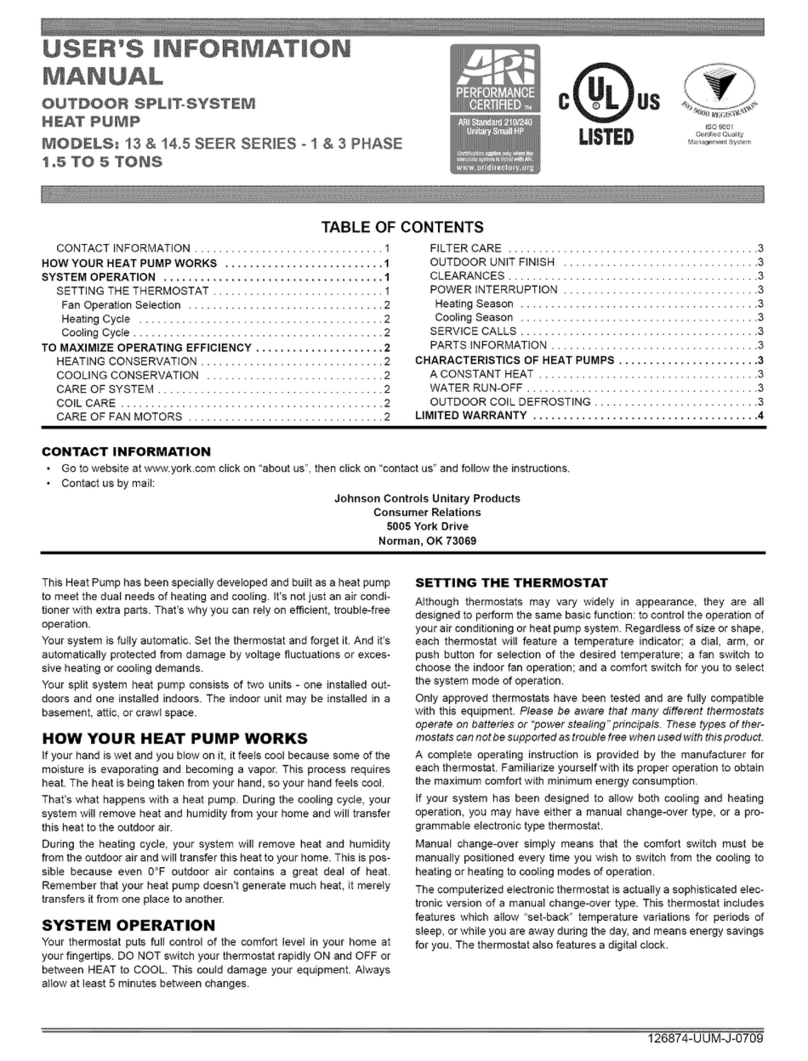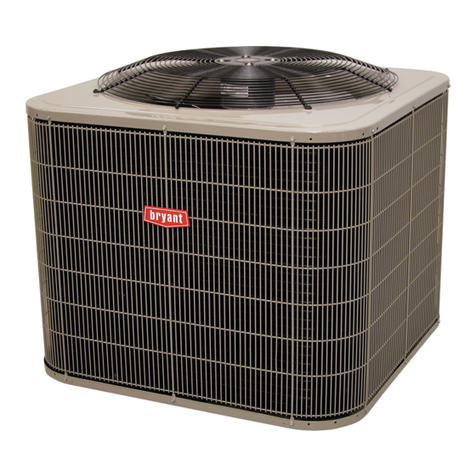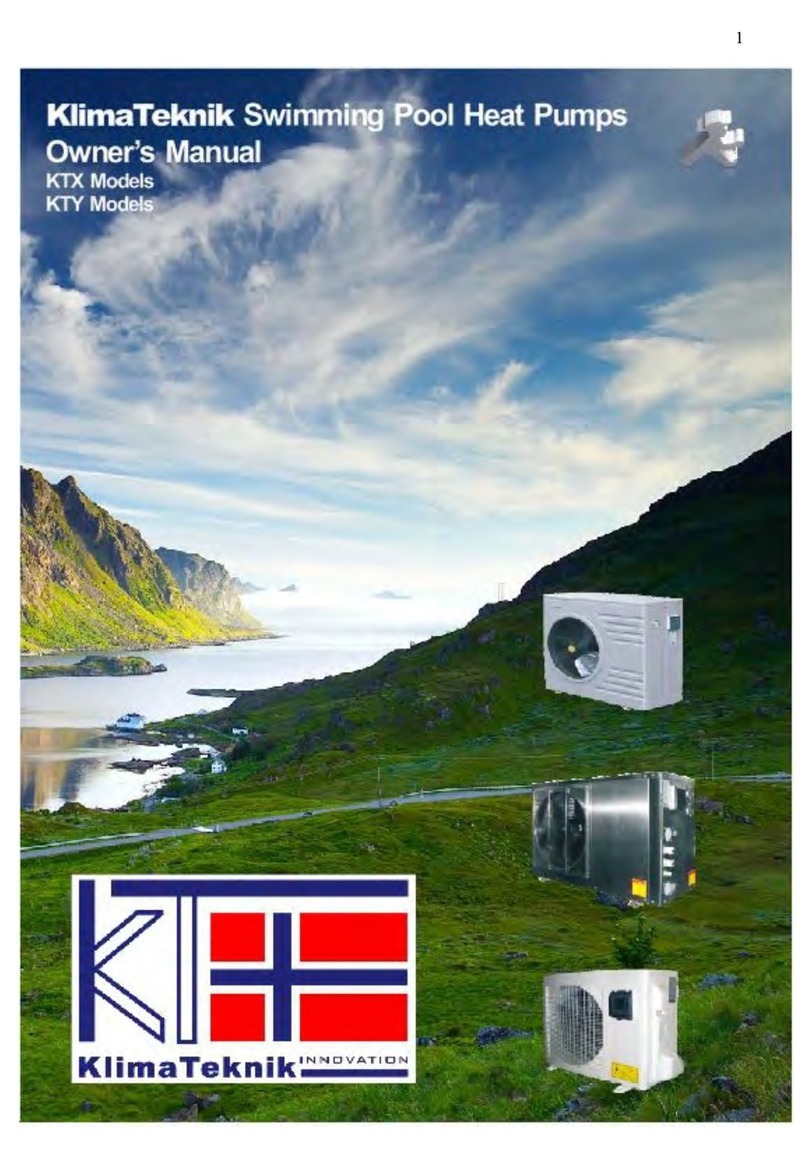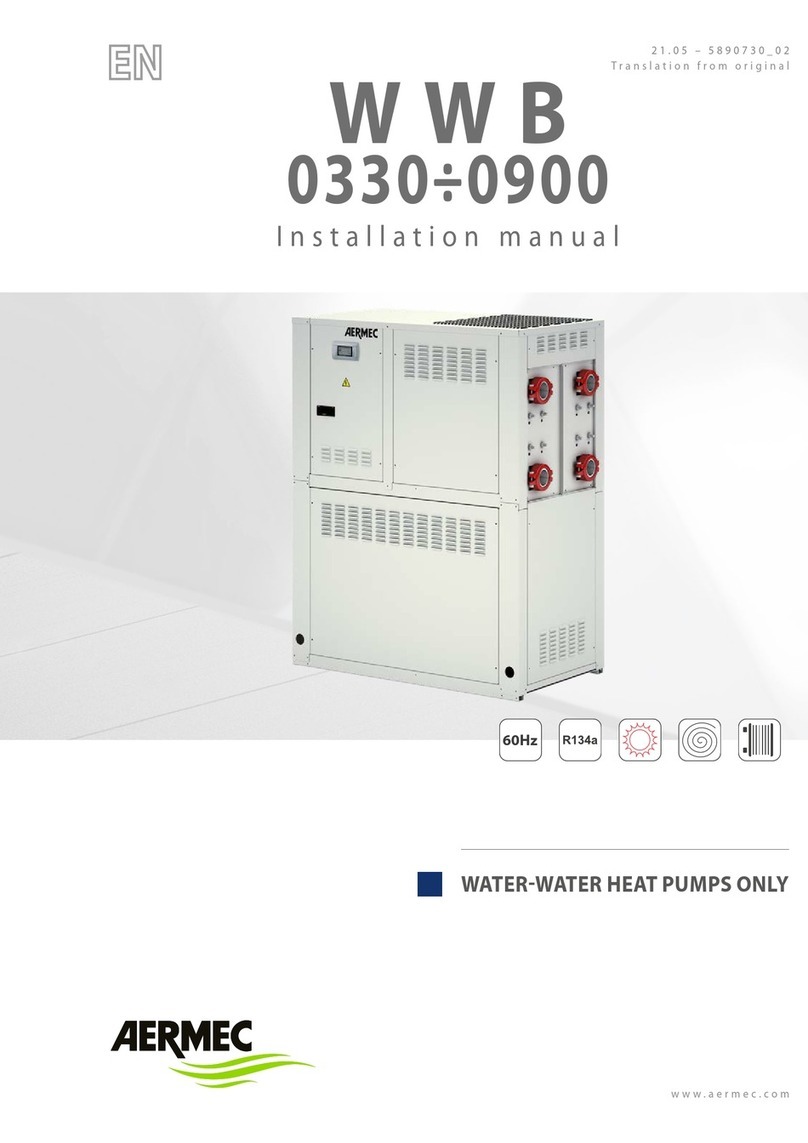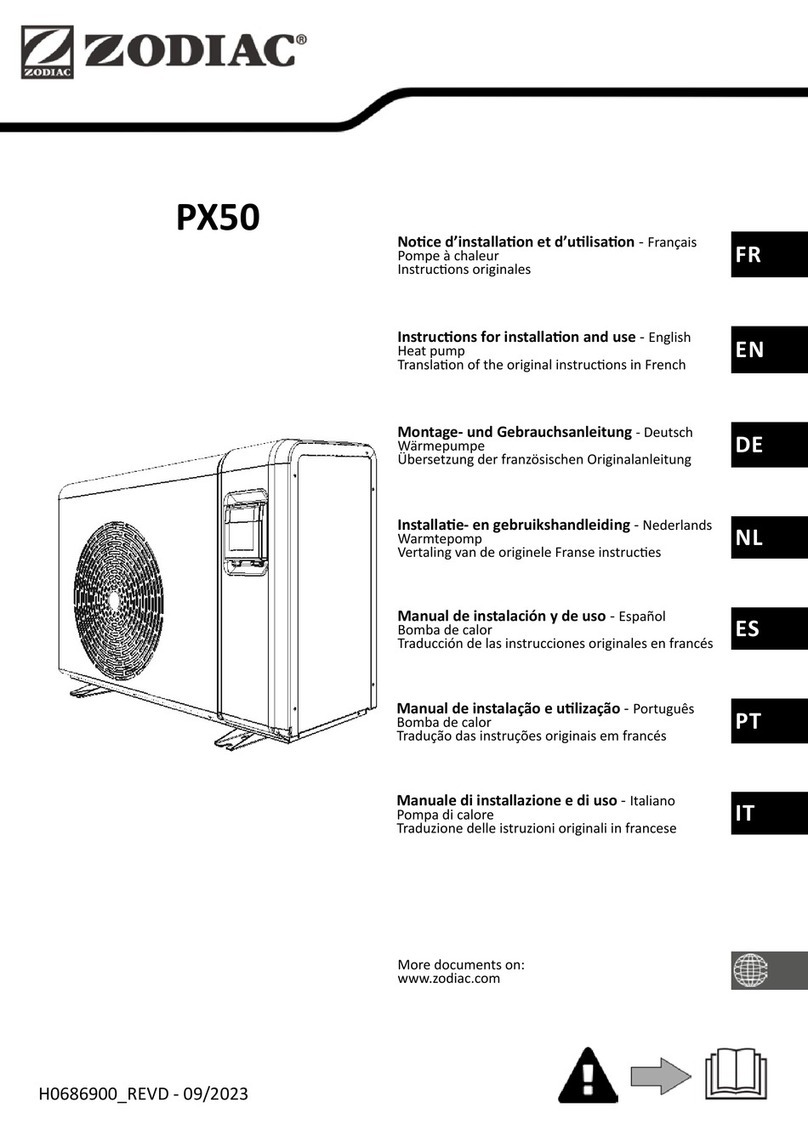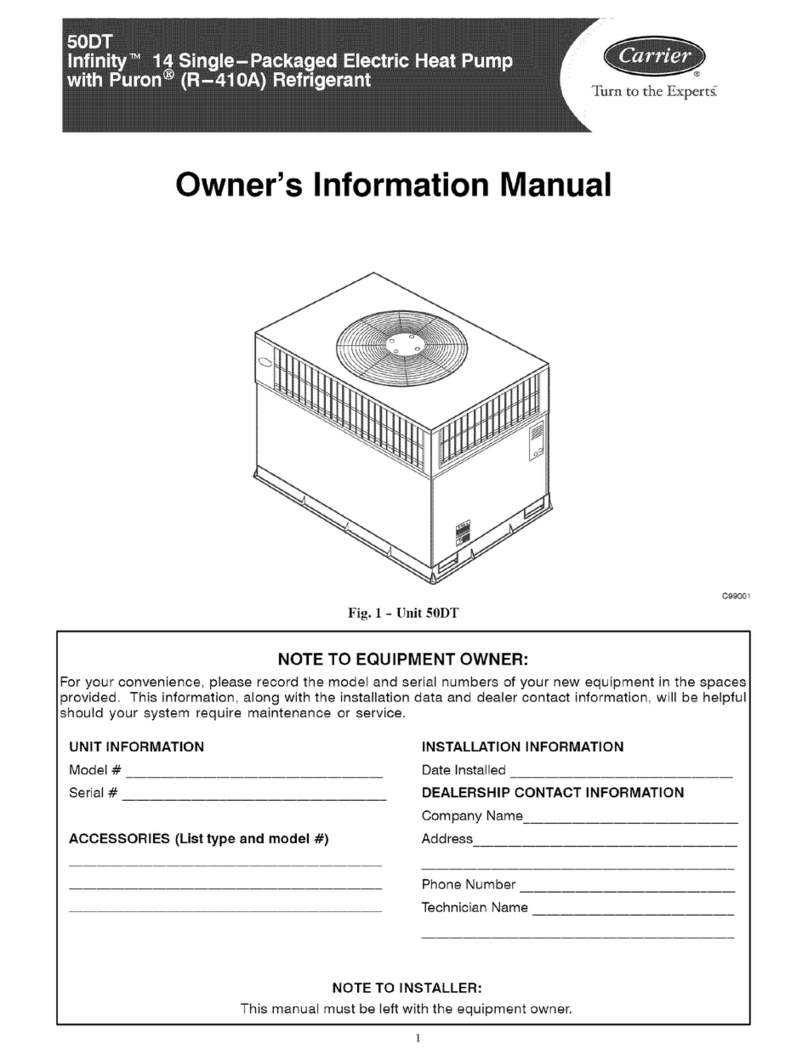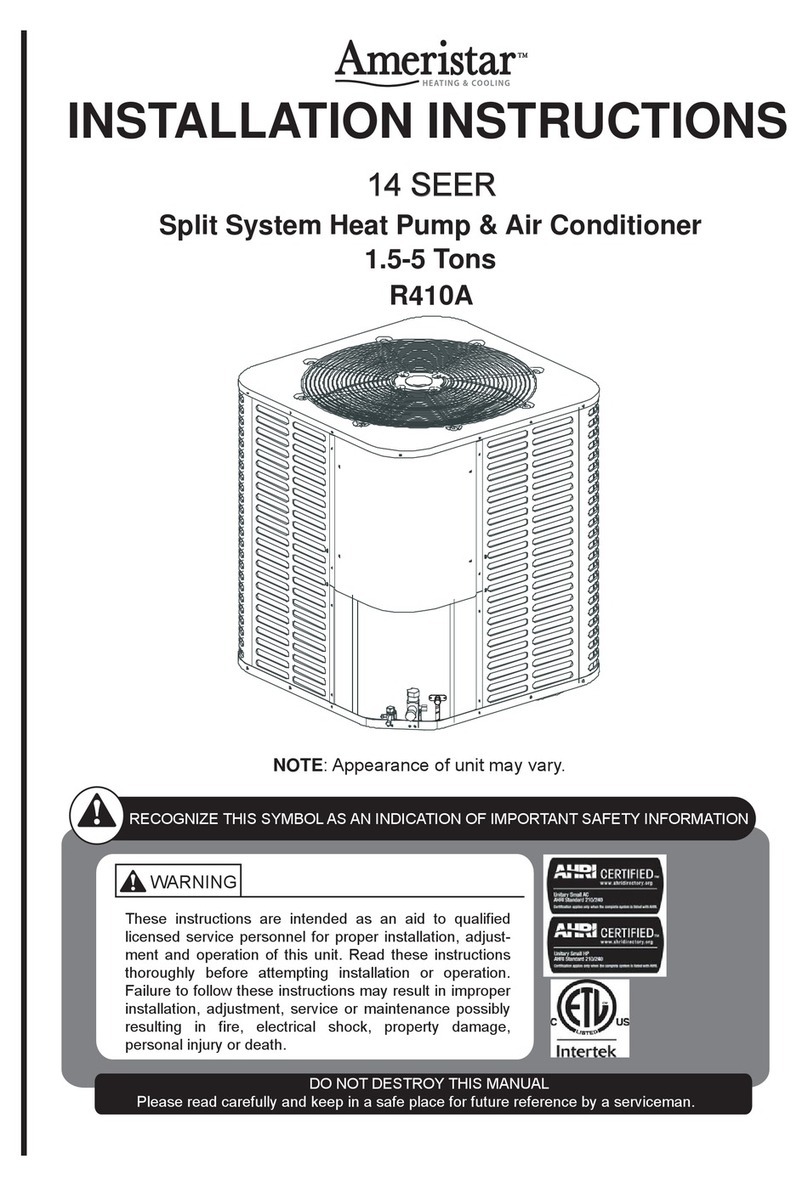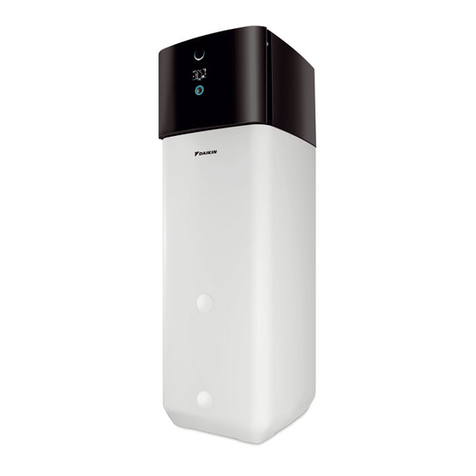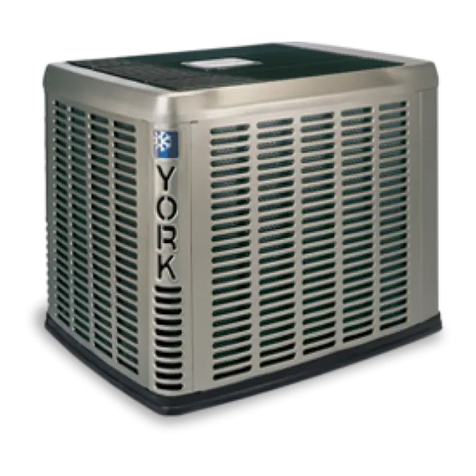Heatcraft H-IM-SCU-LT User manual

H-IM-SCU-LT October 2017 Part No. 25008
4
01
Screw Compressor Condensing Units
Low Temperature Models
Installation and
Operations Manual
Line Sizing ............................9-12
Evacuation and Leak Detection ..............12
Refrigerant Charging Instructions ............12
Field Wiring..............................12
C450 System Control & Adjustment ........13-14
Check Out and Start Up ....................15
Operational Check Out .....................15
System Balancing - Compressor Superheat.....16
System Troubleshooting Guide ...............18
Preventive Maintenance Guidelines ...........18
Wiring Diagrams.......................19-26
Interlink™ Replacement Parts...............30
Table of Contents
General Safety Information...................2
Inspection................................2
Warranty Statement ........................2
Space and Location Requirements.............3
Condensing Unit Rigging and Mounting .........4
Head Pressure Control ......................5
Refrigerant Oil Type ........................5
Recommended Refrigerant Piping Practices .....7
Refrigerant Pipe Support ....................7
Suction Lines .............................7
Liquid Lines ..............................8
Unit Cooler Piping..........................8

2© 2017 Heatcraft Refrigeration Products, LLC
1. Installation and maintenance to be performed only by qualied
personnel who are familiar with this type of equipment.
2. All units are pressurized with dry air or inert gas.
All units must be evacuated before charging the system with refrigerant.
3. Make sure that all eld wiring conforms to the requirements of the
equipment and all applicable national and local codes.
4. Avoid contact with sharp edges and coil surfaces.
They are a potential injury hazard.
5. Make sure all power sources are disconnected before any service work
is done on units.
6. Oil to charge oil separator and oil cooler shipped loose.
WARNING:
Refrigerant can be harmful if it is inhaled. Refrigerant must be used and recovered responsibly.
Failure to follow this warning may result in personal injury or death.
No oil installed in condensing unit as shipped from factory. Oil must be charged before operating.
Inspection
Responsibility should be assigned to a dependable individual at the job site to receive
material. Each shipment should be carefully checked against the bill of lading. The
shipping receipt should not be signed until all items listed on the bill of lading have
been accounted. Check carefully for concealed damage. Any shortage or damages
should be reported to the delivering carrier. Damaged material becomes the delivering
carrier’s responsibility, and should not be returned to the manufacturer unless prior
approval is given to do so. When uncrating, care should be taken to prevent damage.
Heavy equipment should be left on its shipping base until it has been moved to the
nal location. Check the serial tag information with invoice. Report any discrepancies
to your Heatcraft Refrigeration Products Sales Representative.
Warranty Statement
Seller warrants to its direct purchasers that products, including Service Parts, manu-
factured by SELLER shall be of a merchantable quality, free of defects in material or
workmanship, under normal use and service for a period of one (1) year from date of
original installation, or eighteen (18) months from date of shipment by SELLER, which-
ever rst occurs. Any product covered by this order found to Seller’s satisfaction to
be defective upon examination at Seller’s factory will at SELLER’s option, be repaired
or replaced and returned to Buyer via lowest common carrier, or SELLER may at its
option grant Buyer a credit for the purchase price of the defective article. Upon return
of a defective product to SELLER’s plant, freight prepaid, by Buyer, correction of such
defect by repair or replacement, and return freight via lowest common carrier, shall
constitute full performance by SELLER of its obligations hereunder.
SELLER shall have no liability for expenses incurred for repairs made by Buyer except
by prior, written authorization. Every claim on account of breach of warranty shall
be made to SELLER in writing within the warranty period specied above – other-
wise such claim shall be deemed waived. Seller shall have no warranty obligation
whatsoever if its products have been subjected to alteration, misuse, negligence,
free chemicals in system, corrosive atmosphere, accident, or if operation is contrary
to SELLER’s or manufacturer’s recommendations, or if the serial number has been
altered, defaced, or removed.
Motor Compressors
Motor compressors furnished by SELLER are subject to the standard warranty terms
set forth above, except that motor compressor replacements or exchanges shall be
made through the nearest authorized wholesaler of the motor compressor manufac-
turer (not at SELLER’s factory) and no freight shall be allowed for transportation of the
motor compressor to and from the wholesaler. The replacement motor compressor
shall be identical to the model of the motor compressor being replaced. Additional
charges which may be incurred throughout the substitution of other than identical re-
placements are not covered by this warranty. An optional, non assignable, four (4) year
extended compressor warranty may be purchased within the boundaries of the United
Sates of America, its territories and possessions, and Canada. With this extended
compressor warranty, replacements are administered by an authorized compressor
distributor only. Replacements within the rst year of the warranty area available
through the distributor; the second through fth years, the
purchaser must submit a proof-of-purchase of a compressor and supply it to Heatcraft
Refrigeration Products Warranty Claims for reimbursement.
Seller makes no express warranties except as noted above. All implied warranties are
limited to the duration of the Express Warranty. Liability for incidental and consequen-
tial damages is excluded.
The forgoing is in lieu of all other warranties, express or implied, notwithstanding the
provisions of the uniform commercial code, the Magnuson-Moss Warranty - Federal
Trade Commission Improvement Act, or any other statutory or common law, federal or
state.
SELLER makes no warranty, express or implied, of tness for any particular purpose,
or of any nature whatsoever, with respect to products manufactures or sold by seller
hereunder, except as specically set forth above and on the face hereof. It is expressly
understood and agreed that SELLER shall not be liable to buyer, or any customer of
buyer, for direct or indirect, special, incidental, consequential or penal damages, or
for any expenses incurred by reason of the use or misuse by buyer or third parties of
said products. To the extent said products may be considered "consumer products,"
As dened in Sec. 101 of the Magnuson-Moss Warranty - Federal Trade Commis-
sion Improvement Act, SELLER makes no warranty of any kind, express or implied, to
"consumers," except as specically set forth above and on the face hereof.
The following conditions should be adhered to when installing this unit to maintain the
manufacturer's warranty:
1. System piping must be in accordance with good refrigeration
practices.
2. Inert gas must be charged into the piping during brazing.
3. The power supply to the unit must meet the following conditions:
a. Three phase voltages must be +/- 10%
of nameplate ratings.
b. Phase imbalance cannot exceed 2%.
4. All control and safety switch circuits must be properly connected
according to the wiring diagram.
5. The factory installed wiring and piping must not be changed without
written factory approval.
6. All equipment is installed in accordance with Heatcraft Refrigeration
Products specied minimum clearances.
7. Oil charge not to be added directly into the compressors! Oil cooler
must be charged with oil injection line solenoid closed. Open all
shutoff valves on oil separator and oil cooler oil must be charged
directly into the oil separator and oil cooler before evacuation. Charge
separator until oil is within its sight glass range.
General Safety Information
NOTE:
SSV and DSV condensing units are designed for operation with DX evaporators only, and is not designed to
beapplied with ooded or liquid recirculating evaporators. Applications of Heatcraft SSV and DSV Screw condensing
units with evaporators that are not DX are not the responsibility of, and will not be supported by Heatcraft Refrigeration
Products.

3
© 2017 Heatcraft Refrigeration Products, LLC
The most important consideration which must be taken into account when deciding upon the location of air-cooled equipment is the provision for a supply
of ambient air to the condenser, and removal of heated air from the condensing unit or remote condenser area. Where this essential requirement is not
adhered to, it will result in higher head pressures, which cause poor operation and potential failure of equipment. Units must not be located in the vicinity
of steam, hot air or fume exhausts. Corrosive atmospheres require custom designed condensers.
Another consideration which must be taken is that the unit should be mounted away from noise sensitive spaces and must have adequate support to avoid
vibration and noise transmission into the building. Units should be mounted over corridors, utility areas, rest rooms and other auxiliary areas where high
levels of sound are not an important factor. Sound and structural consultants should be retained for recommendations.
Space and Location Requirements
for Air Cooled Condensing Units
Multiple Units
For units placed side by side, the minimum distance between units is the
width of the largest unit. If units are placed end to end, the minimum distance
between units is 4 feet.
Units in Pits
The top of the unit should be level with the top of the pit, and side distance
increased to “2W”. If the top of the unit is not level with the top of pit, dis-
charge cones or stacks must be used to raise discharge air to the top of the
pit. This is a minimum requirement.
Decorative Fences
Fences must have 50% free area, with 1 foot undercut, a “W” minimum clear-
ance, and must not exceed the top ofunit. If these requirements are not met,
unit must be installed as indicated for “Units in Pits".
Walls or Obstructions
The unit should be located so that air may circulate freely and not be recirculated.
For proper air ow and access all sides of the unit should be a minimum of “W” away
from any wall or obstruction. It is preferred that this distance be increased whenever
possible. Care should be taken to see that ample room is left for maintenance work
through access doors and panels. Overhead obstructions are not permitted. When
the unit is in an area where it is enclosed by three walls the unit must be installed as
indicated for units in a pit.
Figure 1. Clearance From Walls or Obstructions
Figure 2. Clearance For Multiple Units Placed Side by Side
Figure 3. Clearance For Units in Pits
Figure 4. Clearance For Fence Enclosures

4© 2017 Heatcraft Refrigeration Products, LLC
Condensing Unit Rigging and Mounting
Rigging holes are provided on all units. Caution should be exercised when moving these units. To prevent damage to the unit housing during rigging, cables or chains used must
be held apart by spacer bars. The mounting platform or base should be level and located so as to permit free access of supply air.
Rigging And Handling
1. Rig unit as shown. Use spreader bar to protect cabinet.
2. Avoid rough handling and shock to the unit
Location And Mounting
1. If possible locate units over or outside of utility areas, corridors or auxiliary spaces
to reduce the transmission of sound and vibration to occupied spaces.
2. Use vibration isolators if unit must be mounted where transmission of sound or
vibration is of concern.
3. Install roof-mounted units on steel channels or I-beams to support the unit above
the roof.
4. For ground level installations, concrete slab with footings extending below the frost
line is recommended.
5. Provide at least 4 feet of clearance on the air inlet and discharge sides of the unit
6. Do not attach duct work to coil inlet or fan outlets.
7. Avoid conditions that could cause air recirculation such as sight screening, walls,
etc.
8. Do not locate unit so that air discharge is towards building air intakes.
Pad Mounted Compressor
All units use pad mounted compressors. Check the compressor mounting bolts to
insure they have not vibrated loose during shipment. See Figure 7.
Cabinet Installation
Sheet metal covers between oil cooler and air-cooled condenser are shipped loose
and are to be installed after condensing unit is fully installed on ground or roof mount
(see section above, "Location And Mounting" for mounting instructions).
B
-
SHEET METAL
CUT SIZE-----------------------
.03
HOLE DIAMETER------------
.005
ENDPLATE TUBE HOLE---
.001
C/L OF HOLES-----------------
.02
ANGLES--------------------------±2°
FORMED DIMENSIONS
0 TO 36---------------------------±.03
36 TO 120----------------------- ±.06
OVER 120------------------------±.13
COIL ASSEMBLY
FINNED LENGTH
0 TO 24------------------
.06
24 TO 75----------------
.13
OVER 75----------------
.19
CONNECTIONS-------±13
FIN QUANTITY--------±3%
BOW (ANY DIR ECTION)
12 TO 36---------------- ±.13
36 TO 96-----------------±.19
OVER 96------------------±.25
W IRE & CONDUIT
(NOT UNDER TE NSION)
WIRE CUT SIZE-----+.50/-.00
CONDUIT CUT SIZE
0 TO 12-----------------+.13/-.00
12 TO 36---------------+.38/-.00
OVER 36---------------+.75/-.00
TOLERANCES (UNLESS
OTHERWISE SPECIFIED)
THIS DOCUMENT CONTAINS MATERIAL AND/OR
INFORMATION WHICH IS T HE PROPERTY OF
HEATCRAFT REFRIGERATION PRODUCTS AND IS
SUPPLIED ONLY ON A PROPRIETY BASIS. NO
TRANSMITTAL SHALL BE MADE T O ANY PERSON,
FIRM, OR CORPORATION WITHOUT PRIOR
WRITTEN APPROVAL.
TOLERANCE BLOCK
REVISED 03/05/2014 REV. B
jen 07/13/17
1 OF 1
TITLE:
PRODUCT:
UNIT ASSEMBLY, LT SCREW CDU, 60HP
LT SCREW CDU
PART NO.:
87185001
DWG. NO.:
LT_SCREW_CDU_RIGGING_DWG
REV.
SHEET
DRAWN DATE
REFRIGERATION PRODUCTS LLC
STONE MOUNTAIN, GEORGIA
U.S.A.
--
TUBING
FRACTIONAL----
.03
1 TO 36-------------
.06
OVER 36------------
.13
ANGLES------------±5°
3rd
PROJE CTION
-- -- -- --
07/13/17
APPROVED DATE
REVISIONS
REV
ECM
BY
DATE
DESCRIPTION
Figure 5. - Rigging
Ground Mounting
Concrete slab raised six inches above ground level provides a suitable base. Raising
the base above ground level provides some protection from ground water and wind-
blown matter. Before tightening mounting bolts, recheck level of unit. The unit should
in all cases be located with a clear space in all directions that is at a minimum, equal
to the height of the unit above the mounting surface. A condensing unit mounted in
a corner formed by two walls, may result in discharge air recirculation with resulting
loss of capacity.
Roof Mounting
Due to the weight of the units, a structural analysis by a qualied engineer may be
required before mounting. Roof mounted units should be installed level on steel
channels or an I-beam frame capable of supporting the weight of the unit. Vibration
absorbing pads or springs should be installed between the condensing unit legs or
frame and the roof mounting assembly.
Access
Sufcient access must be provided to ensure future service of all major components
is possible. The screw compressor, as well as some of the compressors removable
components are heavy enough to require additional lifting equipment for service. Care
must be taken during condensing unit placement to accommodate the use of service
equipment for maintenance or repair.
Figure 6. Pad Mount / Anti-Vibration Mount
Washer Compressor for
Mounting Foot
Rubber
"Model
Numbers"
"Approx.
Net
Weight
(Lbs./Kg.)"
SSV060BL6* 8,301 3,765
SSV070BL6* 8,438 3,827
DSV080BL6* 10,833 4,914
DSV100BL6* 11,568 5,247
DSV120BL6* 12,726 5,772
DSV140BL6* 14,035 6,366
Approx. Unit Weights

5
© 2017 Heatcraft Refrigeration Products, LLC
Head Pressure Control
The means of head pressure control available on these condensing units are the
following:
a. Dual Valve System. (See "Operation and Adjustment" section on
page 5.)
b. Pressure Fan Cycle Control. (See "Operation and Adjustment" section
on page 5.)
c. Variable Speed Fan Control (Optional)
Fan management is constantly monitored and adjusted by the controller to maintain
the target head pressure
a. Dual Valve System
The system employs A8 and A9 valves. The high pressure discharge gas is introduced
above the liquid in the receiver tank. The receiver discharge is regulated by the A8 and
A9 valve.
The discharge pressure of the A8 valve must be adjusted to regulate the unit for
proper operating conditions. Adjust the A8 valve shown in Figure 5 to maintain a dis-
charge pressure of 160 to 180 PSIG.“ooding” of the condenser with liquid refrigerant
reduces the available condensing surface, holding the condensing pressure at the
valve setting.
b. Pressure Fan Cycle Control
The cycling of condenser fans provides an automatic means of maintaining head
pressure control, within reasonable limits, at lower ambient air temperatures. A fan
cycling control system allows fans to cycle in sequence by sensing either ambient
temperature or condensing pressures. However, care must be used by the engineer or
installing contractor in making adjustments to prevent short cycling of the fan motors.
Short cycling is normally caused by too close a differential in the control settings or set
points. If ooding valves are used with fan cycling, they must be set to follow the fan
cycling. Recommended differential settings for pressure cycling is a minimum of 35
PSIG. However, system or climate conditions vary and the controls may require further
eld adjustment to provide optimum system performance and prevent short cycling.
Any fan cycle that is less than three minutes is considered short cycling, and could be
detrimental to the system.
c. Fan Speed Modulation (Optional)
Condenser head pressure control is provided by varying the air ow through the
condenser by changing the RPM of the condenser fan(s). system or climate condi-
tions vary and the controls may require further eld adjustment to provide optimum
system performance and prevent excessive ramping and deceleration of fan speed in
response to head pressure
Capacity Control / Loader Staging
Compressor 100% 75% 50%
HSN-64 CR1 = ON CR1 = OFF CR1 = OFF
CR2 = ON CR2 = ON CR2 = OFF
HSN-74 CR1 = ON CR1 = ON CR1 = OFF
CR2 = ON CR2 = OFF CR2 = OFF
NOTE: Mechanical subcooler/economizer not energized during 50% operation
Operation and Adjustment
Condensing units with dual valves require sufcient charge to partially ood the con-
denser during low ambient conditions. (See Flooded Refrigerant Charge Table below)
For the two-valve head pressure controls, adjustment should be made with gauges
connected to the discharge port of the compressor. Adjustments should be made dur-
ing mild or low ambient conditions. First, loosen the seal nut before attempting to turn
the adjustment screw. Turning the adjustment screw “clockwise” on the A8 valve will
raise the set point, while turning the valve stem “counterclockwise” will lower the set
point. One full revolution of the adjusting screw will change the set point 70 psi. Once
desired pressure set point is reached, re-tighen the seal nut.
If adjustments are made during warm ambient conditions, it may not be possible to
adjust the regulator valve as low as desired. Readjustment may be necessary once
cooler conditions prevail.
Table 1. Range Of Liquid Temperatures
(Dependent Upon Refrigerant Type)
SSV060L6* SSV070L6* DSV080L6* DSV100L6* DSV120L6* DSV140L6*
0°F 45-70°F 49-75°F 42-60°F 45-70°F 45-70°F 49-75°F
-10°F 36-61°F 40-67°F 33-55°F 35-60°F 36-62°F 40-67°F
-15°F 32-57°F 35-62°F 28-49°F 30-55°F 32-57°F 35-62°F
-20°F 27-52°F 30-57°F 23-45°F 26-50°F 27-53°F 30-57°F
-30°F 18-43°F 20-47°F 14-34°F 21-40°F 18-43°F 21-47°F
-40°F 9-32°F 14-37°F 5-23°F 6-29°F 9-33°F 11-37°F
Table 2. Flooded Charge
(@-20°F Ambient)
SSV060L6* SSV070L6*
DSV080L6
*(PER
CIRCUIT)
DSV100L6
*(PER
CIRCUIT)
DSV120L6
*(PER
CIRCUIT)
DSV140L6
*(PER
CIRCUIT)
R404A 123 123 133 117 157 176
R507 123 123 133 117 157 176
R407A 128 128 138 121 164 183
R407F 132 132 142 125 168 188
R448A 129 129 139 123 165 185
R449A 129 129 139 123 165 185
Refrigerant Oil Type
BITZER Semi-Hermetic Screws are available in standard HSN models for low tem-
perature condensing applications. These compressors offer excellent part and full load
efciencies.
A key aspect to utilizing these compressors to their fullest potential is specifying the
correct oil for your refrigerant. HSN screws use BSE 170 oil in a variety of refrigerants
(R404A, R507A, R407A, R407F, R448A, and R449A).
Compressor Ports
Figure 5.

6© 2017 Heatcraft Refrigeration Products, LLC
Polyol Ester Lubricants Hygroscopicity
Ester lubricants (POE) have the characteristic of quickly absorbing moisture from the
ambient surroundings. This is shown graphically in Figure 9 where it can be seen that
such lubricants absorb moisture faster and in greater quantity than conventional min-
eral oils. Since moisture levels greater than 100 ppm will results in system corrosion
and ultimate failure, it is imperative that compressors, components, containers and
the entire system be kept sealed as much as possible. Lubricants will be packaged
in specially designed, sealed containers. After opening, all the lubricant in a container
should be used at once since it will readily absorb moisture if left exposed to the am-
bient. Any unused lubricant should be properly disposed of. Similarly, work on systems
and compressors must be carried out with the open time as short as possible. Leaving
the system or compressor open during breaks or overnight MUST BE AVOIDED!
Oil-Cooler Arrangement
Color
As received, the POE lubricant will be clear or straw colored. After use, it may acquire
a darker color. This does not indicate a problem as the darker color merely reects the
activity of the lubricant's protective additive.
Oil Level
The oil separator heater(s) supplied with condensing unit must be turned on 24 hours
before startup.
Oil level must be full on bottom sight-glass and 1/4 full on top sight-glass.
Compressor Protection Device
The Compressor protection module protects the compressor based upon the following
monitored inputs:
• Winding temperature (PTC)
• Discharge gas temperature (PTC)
• Rotating direction / phase sequence
• Cable breakage in the PTC sensor circuit
• Monitoring phase failure / phase asymmetry
• Limits number of motor starts.

7
© 2017 Heatcraft Refrigeration Products, LLC
Suction Lines
Horizontal suction lines should slope away from the evaporator toward the compressor
at the rate of 1/4 inch per 10 feet for good oil return. When multiple evaporators are
connected in series using a common suction line, the branch suction lines must enter
the top of the common suction line.
For dual or multiple evaporator systems, the branch lines to each evaporator should
be sized for the evaporator capacity. The main common line should be sized for the
total system capacity.
Suction lines that are outside of refrigerated space must be insulated. See the
"Line Insulation" section on page 12 for more information.
Phase Loss Monitor
The combination phase sequence and loss monitor relay protects the system
against phase loss (single phasing), phase reversal (improper sequence) and
low voltage (brownout). When phase sequence is correct and full line voltage
is present on all three phases, the relay is energized as the normal condition
indicator light glows.
Note:
If compressor fails to operate and the normal condition indicator light on the
phase monitor does not glow, then the supplied electrical current is not in phase with
the monitor. This problem is easily corrected by the following steps:
1. Turn power off at disconnect switch.
2. Swap any two of the three power input wires feeding into the power
distribution block. Note: Do not swap leads at the phase monitor.
Swapping leads at the phase monitor could result in compressor
and system damage.
3. Turn power on. Indicator light should glow and compressor should
start.
4. Observe motors for correct rotation.
Recommended Refrigerant Piping Practices
The system as supplied by Heatcraft Refrigeration Products, was thoroughly cleaned
and dehydrated at the factory. Foreign matter may enter the system by way of the
evaporator to condensing unit piping. Therefore, care must be used during installation
of the piping to prevent entrance of foreign matter.
Install all refrigeration system components in accordance with applicable local and
national codes and in conformance with good practice required for the proper opera-
tion of the system.
The refrigerant pipe size should be selected from the Line Sizing Tables. The intercon-
necting pipe size is not necessarily the same size as the stub-out on the condensing
unit or the evaporator.
The following procedures should be followed:
1. Do not leave dehydrated compressors or lter-driers on condensing
units open to the atmosphere any longer than is absolutely
necessary.
2. Use only refrigeration grade copper tubing, properly sealed against
contamination.
3. Suction lines should slope 1/4" per 10 feet towards the compressor.
4. Suitable P-type oil traps should be located at the base of each
suction riser to enhance oil return to the compressor.
5. For desired method of superheat measurement, a pressure tap
should be installed in each evaporator suction line in the proximity
of the expansion valve bulb
6. When brazing refrigerant lines, an inert gas should be passed
through the line at low pressure to prevent scaling and oxidation
Figure 7. Example of Pipe Support
Slope 1/4"
per 10 ft.
toward
compressor
Figure 9. Suction P-Traps
Figure 8. Condensing Unit / Compressor to Wall Support
inside the tubing. Dry nitrogen is preferred.
7. Use only a suitable silver solder alloy on suction and liquid lines.
8. Limit the soldering paste or ux to the minimum required to prevent
contamination of the solder joint internally. Flux only the male
portion of the connection, never the female. After brazing, remove
excess ux.
9. If isolation valves are installed at the evaporator, full port ball valves
should be used.
Refrigerant Pipe Support
1. Normally, any straight run of tubing must be supported in at least
two locations near each end of the run. Long runs require additional
supports. The refrigerant lines should be supported and fastened
properly. As a guide, 3/8 to 7/8 should be supported every 5 feet;
1-1/8 every 7 feet; and 1-5/8 and 2-1/8 every 9 to 10 feet.
2. When changing directions in a run of tubing, no corner should be
left unsupported. Supports should be placed a maximum of 2 feet in
each direction from the corner.
3. Piping attached to a vibrating object (such as a compressor or
compressor base) must be supported in such a manner that will not
restrict the movement of the vibrating object. Rigid mounting will
fatigue the copper tubing
4. Do not use short radius ells. Short radius elbows have points of
excessive stress concentration and are subject to breakage at these
points.
5. Thoroughly inspect all piping after the equipment is in operation and
add supports wherever line vibration is signicantly greater than
most of the other piping. Extra supports are relatively inexpensive as
compared to refrigerant loss.

8© 2017 Heatcraft Refrigeration Products, LLC
Suction Line Risers
Prefabricated wrought copper traps are available, or a trap can be made by using two street ells and one regular ell. The suction trap must be the same size as the suction line.
For long vertical risers, additional traps may be necessary. Generally, one trap is recommended for each length of pipe (approximately 20 feet) to insure proper oil movement.
See Figure 12 for methods of constructing proper suction line P-traps.
NOTE:
A suction line trap must be installed at the point where piping changes the
direction of refrigerant ow from any horizontal run to an upward vertical run.
Sized for
Minimum
Load
Sized
for Full
Load
Sized for
Minimum
Load
Sized
for Full
Load
Figure 11. Double Suction Riser Construction
Liquid Lines
Liquid lines should be sized for a minimum pressure drop to prevent “ashing”. Flashing in the liquid lines would create additional pressure drop and poor expansion valve
operation. Condensing unit comes supplied with factory installed mechanical subcooling through the brazed plate heat exchanger.
The solenoid supplying liquid refrigerant to feed the heat exchanger expansion valve only is energized when compressor has at least one loader energized.
Condensing unit comes with ball valves shut preventing liquid from owing to the heat exchanger expansion valve.
Subcooled liquid temperature supplied by heat exchanger dependent upon design conditions and refrigerant type (see Table 9 on page 5)
It is recommended that liquid lines are insulated between heat exchanger and evaporators.
The liquid line solenoid should be installed.
NOTE: Evaporator expansion valve and nozzle selection should be made based upon the design liquid temperature provided in Table 9 on page 16.
Unit Cooler Piping
Pipe size example:
Given: -10°F Freezer with one system having (2) evaporators
• One condensing unit rated at 24,000 BTUH’s @ -20°F SST R404A
refrigerant.
• Two evaporators each rated at 12,000 BTUH’s @ 10°F TD.
• 100 feet of actual line run between condensing unit to rst evaporator
and 20 feet of actual line run between the rst evaporator and the
second evaporator (see Figure 12 below).
How to gure line sizes:
1. Determine equivalent line run = actual run + valves and tting
allowances.
2. Use Line Sizing Tables to size lines.
3. Note any special considerations.
Fittings in this system:
• (6) 90° elbows in main line plus a 90° turn through a tee.
• (5) addtional 90° elbows to rst evaporator.
• (4) additional 90° elbows to second evaporator.
Determine line size 1 (main line from condensing unit):
1. Main line from the condensing unit to be sized for the total capacity
(balance) of the whole system of 24,000 BTUH’s (Table 4)
2. Refer to 24,000 @100 feet at -20°F SST R404A on the chart. You
will nd the suction line to be 1-3/8" and 1/2" liquid line.
3. Refer to Table 3. For every 1-3/8" 90° elbow you must add 4
equivalent feet of pipe and 2.5 equivalent feet of pipe for each
1-3/8" tee.
Therefore, total equivalent line run =
Actual line run 100 feet
+ (6) 1-3/8" elbows @ 4' 24 feet
+ (1) 1-3/8" tee @ 2.5' 2.5 feet
Total equivalent line run 126.5 feet
4. Refer to Table 3. For 126.5 total equivalent feet, the suction line size
should be 1-3/8" and the liquid line stays at 1/2" line.
Note: The gray shaded areas on Table 4. For 24,000 BTUH’s, the
maximum suction riser is 1-1/8" to insure proper oil return and
pressure drop from the bottom p-trap to the top p-trap.
Determine line size 2 (evaporators):
1. Line sizing to each evaporator is based on 12,000 BTUH’s and
equivalent run from condensing unit. First evaporator has an 105 ft.
run and the second evaporator has a 120 ft. run.
2. Table 4 indicates 1-1/8" suction for the rst evaporator and
indicates 1-1/8" suction for the second evaporator.
3. Refer to Table 3. Each 1-1/8" 90° elbow adds 3 equivalent feet of
pipe. Each 90° turn through a 1-1/8" tee adds 6 equivalent feet.
4. Actual line run (evap 1)105 feet
+ (5) 1-1/8" elbows @ 3' 15 feet
+ (1) 90° turn through tee @ 6' 6 feet
Total equivalent line run 126 feet
Actual line run (evap 2) 120 feet
+ (4) 1-1/8" elbows @ 3' 12 feet
Total equivalent line run 132 feet
5. Table 4 indicates 1-1/8" suction line and 3/8" liquid line from main
line to both evaporators.
Evap. 1
Evap. 2
Figure 10. Pipe Size Example

9
© 2017 Heatcraft Refrigeration Products, LLC
Table 3. Weight of Refrigerants in Copper Lines During Operation (Pounds per 100 lineal feet of type "L" tubing)
Line Size O.D.
(Inches) Refrigerant Liquid Line Hot Gas Line Suction Line at Suction Temperature
-40˚F -20˚F 0˚F +20˚F +40˚F
1-1/8
R-407 23.8 2.60 0.10 0.16 0.25 0.37 0.54
R-448A/R-449A 38.4 2.53 0.17 0.27 0.42 0.63 0.92
R-507, 404A 36.1 3.27 0.26 0.39 0.63 0.86 1.24
1-3/8
R-407 40.7 3.96 0.17 0.27 0.43 0.63 0.93
R-448A/R-449A 58.4 3.85 0.25 0.41 0.64 0.96 1.40
R-507, 404A 55.0 4.98 0.40 0.58 0.95 1.32 1.87
1-5/8
R-407 61.8 5.61 0.26 0.41 0.65 1.96 1.43
R-448A/R-449A 82.7 5.45 0.36 0.58 0.90 1.36 1.98
R-507, 404A 78.0 7.07 0.56 0.82 1.35 1.86 2.64
2-1/8
R-407 87.4 9.76 0.36 0.57 0.91 1.38 2.01
R-448A/R-449A 143.8 9.48 0.62 1.01 1.57 2.36 3.44
R-507, 404A 134 12.25 0.98 1.43 2.35 3.23 4.58
2-5/8
R-407 152 15.05 0.63 1.00 1.60 2.38 3.49
R-448A/R-449A 222 14.62 0.96 1.56 2.42 3.65 5.30
R-507, 404A 209 18.92 1.51 2.21 3.62 5.00 7.07
3-1/8
R-407 235 21.48 0.98 1.55 2.46 3.67 5.39
R-448A/R-449A 317 20.86 1.37 2.22 3.45 5.20 7.57
R-507, 404A 298 27.05 2.16 3.15 5.17 7.14 9.95
3-5/8
R-407 345 29.05 1.40 2.23 3.50 5.23 8.27
R-448A/R-449A 428 28.22 1.86 3.01 4.67 7.04 10.24
R-507, 404A 403 36.50 2.92 4.25 6.97 19.65 13.67
4-1/8
R-407 589 37.60 2.45 3.92 6.17 17.80 9.23
R-448A/R-449A 554 36.53 2.40 3.89 6.05 9.11 13.25
R-507, 404A 526 47.57 3.80 5.55 9.09 12.58 17.80
Line Sizing
The following Table 4 and Table 5 indicate liquid lines and suction lines for all condensing units for R404A, R507A, R407A, R407F, R448A, and R449A.
When determining the refrigerant line length, be sure to add an allowance for ttings. See Table 2. Total equivalent length of refrigerant lines is the sum of the
actual linear footage and the allowance for ttings.
Table 5. Pressure Loss of Liquid Refrigerants in Liquid Line Risers (Expressed in Pressure Drop, PSIG, and Subcooling Loss, ˚F)
Refrigerant
Liquid Line Rise in Feet
10' 15' 20' 25' 30' 40' 50' 75' 100'
PSIG ˚F PSIG ˚F PSIG ˚F PSIG ˚F PSIG ˚F PSIG ˚F PSIG ˚F PSIG ˚F PSIG ˚F
R-407
4.3 1.4 6.4 2.0 8.5 2.7 10.6 3.4 12.8 4.1 17.0 5.4 21.3 6.8 31.9 10.1 42.5 13.5
R-448A,R-449A
4.3 1.1 6.5 1.7 8.7 2.3 10.9 2.8 13.0 3.4 17.4 4.5 21.7 5.6 32.6 8.3 43.5 10.9
R-507, R-404A
4.1 1.1 6.1 1.6 8.2 2.1 10.2 2.7 12.2 3.3 16.3 4.1 20.4 5.6 30.6 8.3 40.8 11.8
NOTES:
Based on 110˚F liquid temperature at bottom of riser.
Table 4. Equivalent Feet of Pipe Due to Valve and Fitting Friction
Copper Tube, O.D., Type “L” 1/2 5/8 7/8 1-1/8 1-3/8 1-5/8 2-1/8 2-5/8 3-1/8 3-5/8 4-1/8 5-1/8 6-1/8
Globe Valve (Open) 14 16 24 28 36 42 57 69 83 99 118 138 168
Angle Valve (Open) 7 9 12 15 18 21 28 34 42 49 57 70 83
90˚ Turn Through Tee 3 4 5 6 8 9 12 14 17 20 24 28 34
Tee (Straight Through) or Sweep Below .75 1 1.5 2 2.5 3 3.5 4 5 6 7 9 11
90˚ Elbow or Reducing Tee (Straight Through) 1 2 2 3 4 4 5 7 8 10 12 14 16

10 © 2017 Heatcraft Refrigeration Products, LLC
Table 6. Recommended Line Sizes for R-404A and R507*
Capacity
BTUH
Suction Line Size Liquid Line Size
Suction Temperature Receiver to Expan-
sion Valve Equiva-
lent Lengths
-10˚F
Equivalent Lengths
-20˚F
Equivalent Lengths
-30˚F
Equivalent Lengths
-40˚F
Equivalent Lengths
25' 50' 100' 150' 25' 50' 100' 150' 25' 50' 100' 150' 25' 50' 100' 150' 25' 50' 100' 150'
78,000 1-3/8 1-5/8 1-5/8 1-5/8 1-5/8 1-5/8 1-5/8 2-1/8 1-5/8 1-5/8 1-5/8 2-1/8 1-5/8 1-5/8 1-5/8 2-1/8 5/8 5/8 5/8 5/8
84,000 1-3/8 1-5/8 1-5/8 2-1/8 1-5/8 1-5/8 2-1/8 2-1/8 1-5/8 1-5/8 2-1/8 2-1/8 1-5/8 1-5/8 2-1/8 2-1/8 5/8 5/8 5/8 7/8
90,000 1-5/8 1-5/8 2-1/8 2-1/8 1-5/8 1-5/8 2-1/8 2-1/8 1-5/8 2-1/8 2-1/8 2-1/8 1-5/8 1-5/8 2-1/8 2-1/8 5/8 5/8 7/8 7/8
120,000 1-5/8 2-1/8 2-1/8 2-5/8 1-5/8 2-1/8 2-1/8 2-5/8 1-5/8 2-1/8 2-1/8 2-5/8 1-5/8 2-1/8 2-1/8 2-5/8 5/8 5/8 7/8 7/8
150,000 2-1/8 2-1/8 2-5/8 2-5/8 2-1/8 2-1/8 2-5/8 2-5/8 2-1/8 2-1/8 2-5/8 2-5/8 2-1/8 2-1/8 2-5/8 2-5/8 5/8 7/8 7/8 7/8
180,000 2-1/8 2-1/8 2-5/8 2-5/8 2-1/8 2-1/8 2-5/8 2-5/8 2-1/8 2-1/8 2-5/8 2-5/8 2-1/8 2-1/8 2-5/8 2-5/8 7/8 7/8 7/8 1-1/8
210,000 2-1/8 2-1/8 2-5/8 3-1/8 2-1/8 2-5/8 2-5/8 3-1/8 2-1/8 2-5/8 2-5/8 3-1/8 2-1/8 2-5/8 2-5/8 3-1/8 7/8 7/8 1-1/8 1-1/8
240,000 2-1/8 2-5/8 2-5/8 3-1/8 2-1/8 2-5/8 2-5/8 3-1/8 2-5/8 2-5/8 3-1/8 3-1/8 2-5/8 2-5/8 3-1/8 3-1/8 7/8 7/8 1-1/8 1-1/8
300,000 2-5/8 2-5/8 3-1/8 3-1/8 2-5/8 2-5/8 3-1/8 3-5/8 2-5/8 2-5/8 3-1/8 3-5/8 2-5/8 2-5/8 3-5/8 3-5/8 7/8 1-1/8 1-1/8 1-3/8
360,000 2-5/8 2-5/8 3-1/8 3-5/8 2-5/8 2-5/8 3-5/8 3-5/8 2-5/8 3-1/8 3-5/8 3-5/8 2-5/8 3-1/8 3-5/8 4-1/8 1-1/8 1-1/8 1-3/8 1-3/8
480,000 2-5/8 3-1/8 3-5/8 3-5/8 2-5/8 3-1/8 3-5/8 3-5/8 3-1/8 3-5/8 4-1/8 4-1/8 3-1/8 3-5/8 4-1/8 4-1/8 1-1/8 1-1/8 1-3/8 1-5/8
600,000 3-1/8 3-1/8 3-5/8 4-1/8 3-1/8 3-1/8 3-5/8 3-5/8 3-1/8 3-5/8 4-1/8 4-1/8 3-1/8 3-5/8 4-1/8 4-1/8 1-1/8 1-3/8 1-5/8 1-5/8
* NOTES:
1. Sizes that are highlighted indicate maximum suction line sizes that should be used for risers. Riser size should not exceed horizontal
size. Properly placed suction traps must also be used for adequate oil return. All sizes shown are for O.D. Type L copper tubing.
2. Suction line sizes selected at pressure drop equivalent to 2˚F. Reduce estimate of system capacity accordingly.
3. If system load drops below 40% of design, consideration to installing double suction risers should be made.

11
© 2017 Heatcraft Refrigeration Products, LLC
Table 7. Recommended Suction Line Sizes for R-448A/R-449A*
Capacity
BTUH
Suction Line Length
Suction Temperature
-10˚F
Equivalent Lengths
-20˚F
Equivalent Lengths
-30˚F
Equivalent Lengths
-40˚F
Equivalent Lengths
25' 50' 75' 100' 150' 200' 25' 50' 75' 100' 150' 200' 25' 50' 75' 100' 150' 200' 25' 50' 75' 100' 150' 200'
78,000 1 3/8 1 5/8 1 5/8 1 5/8 1 5/8 2 1/8 1 5/8 1 5/8 1 5/8 1 5/8 2 1/8 2 1/8 1 5/8 1 5/8 1 5/8 1 5/8 2 1/8 2 1/8 1 5/8 1 5/8 1 5/8 1 5/8 2 1/8 2 1/8
84,000 1 3/8 1 5/8 1 5/8 1 5/8 2 1/8 2 1/8 1 5/8 1 5/8 1 5/8 2 1/8 2 1/8 2 1/8 1 5/8 1 5/8 1 5/8 2 1/8 2 1/8 2 1/8 1 5/8 1 5/8 1 5/8 2 1/8 2 1/8 2 1/8
90,000 1 5/8 1 5/8 1 5/8 2 1/8 2 1/8 2 5/8 1 5/8 1 5/8 2 1/8 2 1/8 2 1/8 2 5/8 1 5/8 2 1/8 2 1/8 2 1/8 2 1/8 2 5/8 1 5/8 1 5/8 2 1/8 2 1/8 2 1/8 2 5/8
120,000 1 5/8 2 1/8 2 1/8 2 1/8 2 5/8 2 5/8 1 5/8 2 1/8 2 1/8 2 1/8 2 5/8 2 5/8 1 5/8 2 1/8 2 1/8 2 1/8 2 5/8 2 5/8 1 5/8 2 1/8 2 1/8 2 1/8 2 5/8 2 5/8
150,000 2 1/8 2 1/8 2 1/8 2 5/8 2 5/8 2 5/8 2 1/8 2 1/8 2 1/8 2 5/8 2 5/8 2 5/8 2 1/8 2 1/8 2 1/8 2 5/8 2 5/8 2 5/8 2 1/8 2 1/8 2 5/8 2 5/8 2 5/8 2 5/8
180,000 2 1/8 2 1/8 2 5/8 2 5/8 2 5/8 3 1/8 2 1/8 2 1/8 2 5/8 2 5/8 2 5/8 3 1/8 2 1/8 2 1/8 2 5/8 2 5/8 2 5/8 3 1/8 2 1/8 2 1/8 2 5/8 2 5/8 2 5/8 3 1/8
210,000 2 1/8 2 1/8 2 5/8 2 5/8 3 1/8 3 1/8 2 1/8 2 5/8 2 5/8 2 5/8 3 1/8 3 1/8 2 1/8 2 5/8 2 5/8 2 5/8 3 1/8 3 1/8 2 1/8 2 5/8 2 5/8 2 5/8 3 1/8 3 1/8
240,000 2 1/8 2 5/8 2 5/8 2 5/8 3 1/8 3 1/8 2 1/8 2 5/8 2 5/8 2 5/8 3 1/8 3 1/8 2 5/8 2 5/8 2 5/8 3 1/8 3 1/8 3 5/8 2 5/8 2 5/8 2 5/8 3 1/8 3 1/8 3 5/8
300,000 2 5/8 2 5/8 2 5/8 3 1/8 3 1/8 3 5/8 2 5/8 2 5/8 2 5/8 3 1/8 3 5/8 3 5/8 2 5/8 2 5/8 3 1/8 3 1/8 3 5/8 4 1/8 2 5/8 2 5/8 3 1/8 3 5/8 3 5/8 4 1/8
360,000 2 5/8 2 5/8 3 1/8 3 1/8 3 5/8 3 5/8 2 5/8 2 5/8 3 1/8 3 5/8 3 5/8 4 1/8 2 5/8 3 1/8 3 5/8 3 5/8 3 5/8 4 1/8 2 5/8 3 1/8 3 5/8 3 5/8 4 1/8 4 1/8
480,000 2 5/8 3 1/8 3 1/8 3 5/8 3 5/8 4 1/8 2 5/8 3 1/8 3 1/8 3 5/8 3 5/8 4 1/8 3 1/8 3 5/8 3 5/8 4 1/8 4 1/8 4 1/8 3 1/8 3 5/8 3 5/8 4 1/8 4 1/8 4 1/8
600,000 3 1/8 3 1/8 3 1/8 3 5/8 4 1/8 4 1/8 3 1/8 3 1/8 3 1/8 3 5/8 3 5/8 4 1/8 3 1/8 3 5/8 3 5/8 4 1/8 4 1/8 5 1/8 3 1/8 3 5/8 3 5/8 4 1/8 4 1/8 5 1/8
* NOTES
1. Sizes that are highlighted indicate maximum suction line sizes that should be used for risers. Riser size should not exceed horizontal
size. Properly placed suction traps must also be used for adequate oil return. All sizes shown are for O.D. Type L copper tubing.
2. Suction line sizes selected at pressure drop equivalent to 2˚F. Reduce estimate of system capacity accordingly.
3. If system load drops below 40% of design, consideration to installing double suction risers should be made.
Table 9. Recommended Liquid Line Sizes for R-448A/R-449A*
Capacity
BTUH
Liquid Line Length
Receiver to Expansion Valve Equivalent
Lengths
25' 50' 75' 100' 150' 200'
78,000 1/2 1/2 5/8 5/8 5/8 7/8
84,000 1/2 5/8 5/8 5/8 5/8 7/8
90,000 1/2 5/8 5/8 5/8 7/8 7/8
120,000 5/8 5/8 5/8 7/8 7/8 7/8
150,000 5/8 7/8 7/8 7/8 7/8 7/8
180,000 5/8 7/8 7/8 7/8 7/8 1 1/8
210,000 7/8 7/8 7/8 7/8 7/8 1 1/8
240,000 7/8 7/8 7/8 7/8 1 1/8 1 1/8
300,000 7/8 7/8 1 1/8 1 1/8 1 1/8 1 1/8
360,000 7/8 7/8 1 1/8 1 1/8 1 1/8 1 1/8
480,000 1 1/8 1 1/8 1 1/8 1 1/8 1 3/8 1 3/8
600,000 1 1/8 1 1/8 1 1/8 1 3/8 1 3/8 1 3/8
* NOTES
1. Sizes that are highlighted indicate maximum suction line sizes that should be used for risers. Riser size should not
exceed horizontal size. Properly placed suction traps must also be used for adequate oil return. All sizes shown are for
O.D. Type L copper tubing.
2. Suction line sizes selected at pressure drop equivalent to 2˚F. Reduce estimate of system capacity accordingly.
3. If system load drops below 40% of design, consideration to installing double suction risers should be made.

12 © 2017 Heatcraft Refrigeration Products, LLC
Refrigerant Charging Instructions
1. Install a liquid line drier in the refrigerant supply line between the
service gauge and the liquid service port of the receiver.
2. This extra drier will insure that all refrigerant supplied to the system
is clean and dry.
3. When initially charging a system that is in a vacuum, liquid
refrigerant can be added directly into the receiver tank.
4. Condensing unit refrigerant capacity can be held in the receiver. For
condenser ooded refrigerant charge, please see Table 2 on page 5.
5. Check equipment catalog for refrigerant capacity. Do not add more
refrigerant than the data tag indicates, unless the line run exceeds
25ft. Then, add additional refrigerant as per Table 1 on page 9.
Weigh the refrigerant drum before charging so an accurate record
can be kept of the weight of refrigerant put in the system.
6. Start the system and nish charging until the sight glass indicates
a full charge and the proper amount has been weighed in. If the
refrigerant must be added to the system through the suction side of
the compressor, charge in vapor form only. Liquid charging must be
done in the high side only or with liquid metering devices to protect
the compressor.
Field Wiring
The eld wiring should enter the areas as provided on the unit. The wiring diagram for
each unit is located on the inside of the electrical panel door. All eld wiring should
be done in a professional manner and in accordance with all governing codes. Before
operating unit, double check all wiring connections, including the factory terminals.
Factory connections can vibrate loose during shipment.
1. The serial data tag on the unit is marked with the electrical characteristic
for wiring the unit.
2. Consult the wiring diagram in the unit cooler and in the condensing unit for
proper connections.
3. Wire type should be of copper conductor only and of the proper size to handle
the connected load.
4. The unit must be grounded.
Evacuation and Leak Detection
Due to the smaller molecule size of HFC’s, they will tend to leak more readily than
CFC’s. Consequently, it is of the utmost importance that proper system evacuation and
leak detection procedures be employed.
Manufacturer recommendation is a minimum of 500 micron evacuation. In addition,
a vacuum decay test is strongly recommended to assure there is not a large pressure
differential between the system and vacuum pump. Good evacuation processes
include frequent vacuum pump oil changes and large diameter, short hose connec-
tions to both high and low sides of the system preferably using bronze braided hose.
Leak detection can be carried out in the conventional manner. If HCFC or CFC tracer
gas is used, care must be taken to completely remove all traces of the gas prior to
introducing HFC’s.
Electronic leak detectors are now available that will sense HFC’s. This is considered
preferable since it removes the possibility of chlorine remaining in the system after
leak testing with HCFC’s and/or CFC’s. There is a view that even small quantities of
chlorine may act as a catalyst encouraging copper plating and/or corrosion and should
therefore be avoided.
All service valves and ball valves should be in the opened position.
Leak Testing
After all lines are connected, the entire system must be leak tested. The complete
system should be pressurized to not more than 150 psig with refrigerant and dry ni-
trogen (or dry CO2). The use of an electronic type leak detector is highly recommended
because of its greater sensitivity to small leaks. As a further check it is recommended
that this pressure be held for a minimum of 12 hours and then rechecked. For a
satisfactory installation, the system must be leak tight.
Line Insulation
After the nal leak test, refrigerant lines exposed to high ambient conditions should
be insulated to reduce heat pickup and prevent the formation of ash gas in the liquid
lines. Suction lines must always be insulated with 3/4" wall Armstrong “Armaex” or
equal. Due to mechanical subcooling of the liquid, it is recommended that liquid lines
be insulated with 1/2 wall insulation or better. The insulation located in outdoor envi-
ronments should be protected from UV exposure to prevent deterioration of insulating
value.
Evacuation
A vacuum pump should be connected to both the low and high side evacuation valves
with copper tube or high vacuum hoses (1/4" ID minimum). If the compressor has ser-
vice valves, they should remain closed. A deep vacuum gauge capable of registering
pressure in microns should be attached to the system for pressure readings.
A shut off valve between the gauge connection and vacuum pump should be provided
to allow the system pressure to be checked after evacuation. Do not turn off vacuum
pump when connected to an evacuated system before closing shut off valve.
The vacuum pump should be operated until a pressure of 1,500 microns absolute
pressure is reached — at which time the vacuum should be broken with the refriger-
ant to be used in the system through a drier until the system pressure rises above “0”
psig.
NOTE:
Refrigerant used during evacuation cannot be vented. Reclaim all used refrig-
erant. EPA regulations are constantly being updated. Ensure your procedure follows
correct regulations.
Repeat this operation a second time.
Open the compressor service valves and evacuate the entire system to 500 microns
absolute pressure.
The system should be left for 30 minutes and micron level monitored to ensure there
is not a signicant rise in micron level. A signicant rise indicates a leak or moisture
trapped in the system.
Once satisfactory, raise the pressure to 2 psig with the refrigerant and remove the
vacuum pump.
CAUTION: Do not use the refrigeration compressor to
evacuate the system. Do not start the compressor while it is in
a vacuum. Unit should be charged with oil before evacuation
begins
WARNING:
All wiring must be done in accordance with applicable
codes and local ordinances.

13
© 2017 Heatcraft Refrigeration Products, LLC
C450 System Controls and Adjustment
The system 450 series provide on/off and proportional control of temperature and
pressure conditions. For these condensing units, these controls will provide control
of the following functions: On/Off Relay output control for low pressure cut in/out,
high pressure cut in/out, loaders solenoid cut in/out, and condenser fan cut in/out.
For optional compressor VFD and/or modulating condenser fan control, a proportional
analog output will be provided.
Callout Feature Description
1 Status or Setup Value Displays the current input status, output
status or setup parameter value for the
displayed input sensor, output and/or
setup parameter. Press up or down to
select a different parameter value when
the value is ashing. (Here, 100 = 100%.)
2 LED Green LEDs on the Control Module and
Expansion Modules indicate if the associ-
ated relay or analog output is on or off. If
the analog output is partially on (between
0–10V), the LED blinks. The higher the
output signal strength, the longer the LED
is on.
3 Output Number Displays a numerical value that identies
the output associated with the status or
setup value shown on the screen. Output
numbers are automatically determined
by the outputs' physical positions (left to
right) in the module assembly. (Here, 4 =
Output 4.)
4 Control Ram Icon Displays whether an analog output (only)
is set as direct-acting or reverse-acting,
and whether the output signal strength
is at minimum or maximum when the
sensed
property is at Setpoint. The control ramp
icon displayed is determined by the
output's
SP, EP, OSP, and OEP setup values.
5 Next Button In the Main screens, press right arrow to
scroll through the system status screens.
In a setup screen, press right arrow to
save the (ashing) setup value and go to
the next setup screen
6 Up and Down Buttons Press up or down to select a different
value for any ashing value in the setup
value eld.
In the Main (sensor status) screens, press
up and down hold both and for 5 seconds
to
access the setup Start screens.
Callout Feature Description
7 Menu Button Press”M” to move through the sensor and
output setup start screens. When moving
through the status or setup screens, press
“M” to return to the status start screen or
setup start screen.
8 Status or Setup Indentier Displays the unit of measurement, output,
sensor number, or setup parameter for the
displayed status or setup value. (Here, the
setup identier OSP represents % output
signal strength at setpoint).
9 LCD Backlit LCD screen. The LCD brightness is
adjustable. During normal operation, the
LCD displays the Main screens.
System 450 Wiring Terminals
Teminal Block Type Terminal Label Terminal Function
Sensor and Low-
Voltage Supply
Power Terminal
Block
24V Provides power terminal for
active 24VAC humidity
sensors when a C450YNN
power module is
connected.
5V Provides 5 VDC power for
active sensors.
Sn1, Sn2, Sn3 Accepts passive or active
input signals from sensors.
C Provides low-voltage com-
mon connections for passive
or active sensors connected
to the 5V, Sn1, Sn2, and
Sn3 terminals.
Note: The terminals are
connected internally.
COM Provides low-voltage com-
mon connections for
24 VAC power connected to
the 5V, Sn1, Sn2, and
Sn3 terminals.
Note: The terminals are
connected internally.
Line-Voltage Output
Relay Terminal
Blocks (on Control
and Expansion
Modules with Relay
Output)
LNC1, LNC2 Connects equipment control
circuit to the line-voltage
Normally Closed (LNC) con-
tact on the SPDT relay.
LNC2 terminals are only on
control and expansion
modules with two output
relays.
LNO1, LNO2 Connects equipment control
circuit to the line-voltage
Normally Open (LNO) contact
on the SPDT relay.
LNO2 terminals are only on
control and expansion
modules with two output
relays.
LC1, LC2 Connects line power to the
line-voltage Common (LC)
on the SPDT relay.
LC2 terminals are only on
control and expansion
modules with two output
relays.

14 © 2017 Heatcraft Refrigeration Products, LLC
System 450 Wiring Terminals (CONTINUTED)
Teminal Block Type Terminal Label Terminal Function
Low-Voltage
Analog Output
terminal Block (on
Control and Expan-
sion Modules with
Analog Outputs)
AO1
A02
In conjunction with the COM
terminal, provides a
self-detecting analog output
signal; either
0 to 10 VDC or 4 to 20 mA.
ACOM In conjunction with the AO1
or AO2 terminal, provides
a self-detecting analog out-
put signal; either 0 to 10
VDC or 4 to 20 mA.
Troubleshooting System 450 Controls
System 450 control modules display error messages on the LCD when the module
detects a sensor, sensor wiring, sensor power, or power supply failure. The table
immediately below shows the System 450 error messages that may be displayed, and
provides possible causes for the error messages and the solutions for remedying the
errors.
Error Screen Problem/Symptom Possible Cause Solution
Sensor failure is
detected
and < SNF > is
displayed
(instead of a
value).
Outputs that refer-
ence
the failed sensor
are
operating in the
Sensor
Failure Modes
selected
for the Output at
setup.
Sensor, sensor
wiring, or sensor
connections may
have failed to
open or
close.
Check and the
verify integrity of
sensor wiring and
connections. Mea-
sure the voltage
between the
sensor terminal
(Sn1, Sn2, or
Sn3) and the low
voltage
common (C)
terminal (with the
sensor
connected). See
Table 11 for the
sensor’s expected
voltage range. If
the sensor wiring
and sensor
connections are
good, replace the
sensor and
recheck the volt-
age.
Specied Voltage Ranges Between Sensor Terminals
Connected Sensor Specied Voltage Range
Measured between a Sensor terminal
(Sn1, Sn2, or Sn3) and a Common
Terminal (C)
A99B temperature Sensor 0.49 to 1.43 VDC
P499 electronic Pressure Transducer 0 to 5.0 VDC

15
© 2017 Heatcraft Refrigeration Products, LLC
Check Out and Start Up
1. After the installation has been completed, the following points
should be covered before the system is placed in operation:
2. Check all electrical and refrigerant connections.
Be sure they are all tight.
3. Check compressor mounting fasteners for tightness.
4. Wiring diagrams, instruction bulletins, etc., attached to the
condensing units should be read and led for future reference.
5. All fan motors should be checked for proper rotation. Fan motor
mounts and fan blades should be carefully checked for tightness
and proper alignment.
6. Electric evaporator fan motors should be temporarily wired for
continuous operation until the room temperature has stabilized.
7. Observe system pressures during charging and initial operation. Do
not add oil while the system is short of refrigerant unless oil level is
dangerously low.
8. Ensure oil level is within sight glass of oil separator and heaters
have been run 24 hours prior to startup.
9. Check that compressor and oil separator shut off valves are opened.
10. Subcooler solenoid valve energizes when compressor is loaded
atleast 75%. The expansion valve metering refrigerant into the heat
exchanger should be set immediately to prevent liqud refrigerant
from returning to compressor through the ECO port.
Ensure compressor not ooded with oil (can occur if oil injection
solenoid is energized when compressor not operating).
Do not start compressor when initially running unit without a set of
gauges attached to the suction and discharge ports of compressor.
At initial compressor start, the following changes in pressure should
be observed: suction pressure drops and discharge pressure rises.
**If not observed, stop unit immediately. Compressor running
with reverse rotation will lead to failure within seconds!
11. Ensure pressure switches cutout above 0 PSIG. Monitor system
pressures to ensure pressure switches cut-in and out as set.Set
switches so that compressor does not run into a vacuum
12. Continue charging until system has sufcient refrigerant for proper
operation. Do not overcharge. Topping off the system during the
initial pull-down can contribute to overlling system.
Remember that bubbles in a sight glass may be caused by a
restriction as well as a shortage of refrigerant.
13. Do not leave unit unattended until the system has reached normal
operating conditions and the oil charge has been properly adjusted
to maintain the oil within lower sight glass range.
14. Make sure all Schrader valve caps are in place and tight.
15. Make sure ALL service valves are properly back-seated and tighten
valve packing if necessary.
Operational Check Out
After the system has been charged and has operated for at least two hours at normal
operating conditions without any indication of malfunction, it should be allowed to
operate overnight on automatic controls. Then a thorough recheck of the entire system
operation should be made as follows:
1. Check compressor discharge and suction pressures. If not within
system design limits, determine why and take corrective action.
2. Check liquid line sight glass and expansion valve operation. If
there are indications that more refrigerant is required, leak test all
connections and system components and repair any leaks before
adding refrigerant.
3. Observe oil level in oil separator sight glass. Add oil as within lower
sight glass range.
4. Thermostatic expansion valves must be checked for proper
superheat settings. Feeler bulbs must be in positive contact with the
suction line and should be insulated. Valves set at high superheat
will lower refrigeration capacity. Low superheat promotes liquid
slugging and compressor bearing washout.
5. Using suitable instruments, carefully check line voltage and
amperage at the compressor terminals. Voltage must be within 10%
of that indicated on the condensing unit nameplate. If high or low
voltage is indicated, notify the power company. If amperage draw
is excessive, immediately determine the cause and take corrective
action. On three phase motor compressors, check to see that a
balanced load is drawn by each phase.
6. The maximum approved settings for high pressure controls on
our air cooled condensing equipment is 425 psig. On air cooled
systems, check as follows:
Disconnect the fan motors or block the condenser inlet air. Watch
high pressure gauge for cutout point. Recheck all safety and
operating controls for proper operation and adjust if necessary.
7. Check evaporator drain pan for proper drainage.
8. Maximum oil is within sight glass range of oil separator
9. Oil cooler max setting is 150°F outlet temperature
10. Check pressure and temperature of Economizer port vapor line.
Adjust heat exchanger expansion valve as necessary.
11. Check winter head pressure controls for pressure setting.
12. Install instruction card and control system diagram for use of
building manager or owner.
CAUTION:
Check phase rotation with phase meter prior to rst start. Warranty
will be denied if damage is a result of reverse rotation. Extreme care must be taken
in starting compressors for the rst time after system charging. At this time, most of
the refrigerant might be in the oil seperator creating a condition which could cause
compressor damage due to improper lubrication from refrigerant return in oil injection
line. Activating the oil separator heater 24 hours prior to start-up is required.
IMPORTANT:
In order to obtain the maximum capacity from a system, and to
ensure trouble-free operation, it is necessary to balance each and every system.

16 © 2017 Heatcraft Refrigeration Products, LLC
System Balancing - Compressor Superheat
This is extremely important with any refrigeration system.
The critical value which must be checked is suction superheat.
Suction superheat should be checked at the compressor as follows:
1. Measure the suction temperature of the suction line about one foot back from
the compressor using an accurate thermometer.
2. Subtract the saturated temperature from the actual suction line temperature.
The difference is superheat.
Too low a suction superheat can result in liquid being returned to the compressor. This
will cause dilution of the oil and eventual failure of the bearings.
Too high a suction superheat will result in excessive discharge temperatures which
cause a break down of the oil and results in wear, and damage.
It should also be remembered that the system capacity decreases as the suction
superheat increases. For maximum system capacity, suction superheat should be
kept as low as is practical. Bitzer recommends a minimum of 5°F superheat at the
compressor. We recommend that the superheat at the compressor be between 5˚F
and 15˚F.
If adjustments to the suction superheat need to be made, the expansion valve at the
evaporator should be adjusted.
NOTE:
All adjustable controls and valves must be eld adjusted to
meet desired operation. There are no factory preset controls or valve
adjustments. This includes low pressure, high pressure, adjustable head
pressure systems and expansion valves.
General Sequence of Operation
Refrigeration Cycle
1. Power is supplied to the timer at terminals “1” and “N”.
2. The fan delay and the defrost termination thermostat is
closed in the fan delay position and open in the defrost
termination position.
The unit cooler fans run continuously.
3. The defrost heaters are o.
4. The room thermostat closes when the temperature rises
above the desired setting.
5. The liquid line solenoid is energized and opens, which allows
liquid refrigerant to ow through the unit cooler.
6. The low pressure control closes when the suction pressure
rises above the cutin setting of the control.
7. The oil ow switch safety control is closed. IIf the oil ow
switch does not close in 3 seconds, the oil safety opens, thus
breaking the circuit to the compressor contactor holding
coil. The compressor will not operate. This control is reset
manually and must be reset before the compressor can be
restarted.
8. The compressor contactor closes. The compressor and
condenser fan start simultaneously. The room temperature
gradually decreases to the desired temperature.
9. Once the desired temperature is reached, the thermostat
opens and the liquid line solenoid closes, stopping
refrigerant ow through the evaporator.
10. Suction pressure decreases and the compressor contactor
opens when the pressure drops below the cutout setting on
the low pressure control. The compressor and condenser fan
stop running.
11. This cycle is repeated as many times as necessary to satisfy
the room thermostat.
12. Frost starts to form on the evaporator coil and continues to
form until the defrost cycle is initiated.
Defrost Cycle
1. The defrost cycle starts automatically by the timer at
predetermined times. Typical settings are two to four defrost
cycles per day for freezers. For heavier frost loads additional
settings may be required.
2. Switch “2” to “4” opens in the timer which breaks the circuit
to the room thermostat, liquid line solenoid, and evaporator
fan motors, allowing the compressor to pump down and
shut o. Simultaneously switch “1” to “3” closes in the timer
allowing current to ow to one side of the defrost heater
contactor. When the compressor shuts o, an auxiliary
contact will send power to the contactor holding coil; thus,
energizing the defrost heaters.
3. The heaters raise the temperature of the coil to 32˚F causing
the frost to melt o the coil.
4. When the coil warms to 45˚F to 55˚F, the defrost termination
thermostat closes, which allows current to the switching
solenoid in the timer allowing the refrigeration cycle to
begin again.
5. The evaporator heaters are o. If the termination thermostat
fails to close, the fail-safe set on the timer will terminate
defrost.
6. The low pressure control closes and the compressor will
start.
7. When the coil temperature reaches 23˚F to 30˚F, the fan
delay closes. This allows the current to ow to the fan
motors. The fan motors start running.
8. The system will now operate in the refrigeration cycle until
another defrost period is initiated by the timer.
Electric Defrost Troubleshooting
The electric defrost units are relatively simple and trouble-free in operation:

17
© 2017 Heatcraft Refrigeration Products, LLC
Table 11. System Troubleshooting Guide
PROBLEM POSSIBLE CAUSES POSSIBLE CORRECTIVE STEPS
Compressor will not run 1. Main switch open.
2. Fuse blown.
3. Thermal overloads tripped.
4. Defective contactor or coil.
5. System shut down by safety devices.
6. No cooling required.
7. Liquid line solenoid will not open.
8. Motor electrical trouble.
9. Loose wiring.
10. Phase loss monitor inoperative.
11. Flow switch open.
12. Oil lter differential too high
1. Close switch.
2. Check electrical circuits and motor winding for shorts or grounds. Investigate for possible
overloading. Replace fuse after fault is corrected.
3. Overloads are automatically reset. Check unit closely when unit comes back on line.
4. Repair or replace.
5. Determine type and cause of shutdown and correct it before resetting safety switch.
6. None. Wait until calls for cooling.
7. Repair or replace coil.
8. Check motor for open windings, short circuit or burn out.
9. Check all wire junctions. Tighten all terminal screws.
10. Reset compressor circuit. If oil not returning, check oil level and differential pressure between
suction/discharge.
11. Change lter.
Compressor noisy or
vibrating
1. Flooding of refrigerant into compressor.
2. Improper piping support on suction or liquid line.
Worn compressor.
1. Check setting of expansion valves.
2. Relocate, add or remove hangers.
3. Replace.
High discharge pressure 1. Non-condensables in system.
2. System overcharges with refrigerant.
3. Discharge shutoff valve partially closed.
4. Fan not running.
5. Head pressure control setting.
6. Dirty condenser coil.
1. Remove the non-condensables.
2. Remove excess.
3. Open valve.
4. Check electrical circuit.
5. Adjust.
6. Clean.
Low discharge pressure 1. Faulty condenser temperature regulation.
2. Suction shutoff valve partially closed.
3. Insufcient refrigerant in system.
4. Low suction pressure.
5. Variable head pressure valve.
1. Check condenser control operation.
2. Open valve.
3. Check for leaks. Repair and add charge.
4. See corrective steps for low suction pressure.
5. Check valve setting.
High suction pressure 1. Excessive load.
2. Expansion valve overfeeding.
1. Reduce load or add additional equipment.
2. Check remote bulb. Regulate superheat.
Low suction pressure 1. Lack of refrigerant.
2. Evaporator dirty or iced.
3. Clogged liquid line lter drier.
4. Clogged suction line or compressor suction gas strainers.
5. Expansion valve malfunctioning.
6. Condensing temperature too low.
7. Improper TXV.
1. Check for leaks. Repair and add charge.
2. Clean.
3. Replace cartridge(s).
4. Clean strainers.
5. Check and reset for proper superheat.
6. Check means for regulating condensing temperature.
7. Check for proper sizing.
Compressor loses oil 1. Lack of refrigerant.
2. Refrigerant ood back.
3. Improper piping or traps.
4. Three way valve opened fully to oil cooler.
1. Check for leaks and repair. Add refrigerant.
2. Maintain proper superheat at compressor.
3. Correct piping.
4. Not enough oil in oil cooler to return to compressor.
Compressor electronic
protector switch open
1. Operating beyond design conditions.
2. Dirty condenser coil.
3. Overcharged system.
1. Add components to bring conditions within acceptable limits
(i.e., CPR/EPR valves, additional condenser surface, liquid injection, etc.).
2. Open valve.
3. Clean coil.
4. Reduce charge.
Oil temperature too high 1. Suction superheat too high
2. Dirty oil cooler coil
3. Fans not running
1. Adjust superheat at expansion valves so that it is within acceptable range.
2. Clean coil
3. Check electrical circuit

18 © 2017 Heatcraft Refrigeration Products, LLC
Preventive Maintenance Guidelines
Unit Coolers
At every six month interval, or sooner if local conditions cause clogging or fouling of
air passages through the nned surface, the following items should be checked.
1. Visually inspect unit
• Look for signs of corrosion on ns, cabinet, copper tubing and
solder joints.
• Look for excessive or unusual vibration for fan blades or sheet metal
panels when in operation. Identify fan cell(s) causing vibration and check
motor and blade carefully.
• Look for oil stains on headers, return bends, and coil ns. Check any
suspect areas with an electronic leak detector.
• Check drain pan to insure that drain is clear of debris, obstructions or ice
buildup and is free draining.
2. Clean evaporator coil and blades
• Periodic cleaning can be accomplished by using a brush, pressurized
water or a commercially available evaporator coil cleaner or mild
detergent. Never use an acid based cleaner. Follow label directions for
appropriate use. Be sure the product you use is approved for use in your
particular application.
• Flush and rinse coil until no residue remains.
• Pay close attention to drain pan, drain line and trap.
3. Check the operation of all fans and ensure airow is unobstructed
• Check that each fan rotates freely and quietly. Replace any fan motor
that does not rotate smoothly or makes an unusual noise.
• Check all fan set screws and tighten if needed.
• Check all fan blades for signs of stress or wear. Replace any blades that
are worn, cracked or bent.
• Verify that all fan motors are securely fastened to the motor rail.
• Lubricate motors if applicable.
4. Inspect electrical wiring and components
• Visually inspect all wiring for wear, kinks, bare areas and discoloration.
Replace any wiring found to be damaged.
• Verify that all electrical and ground connections are secure, tighten if
necessary.
• Check operation/calibration of all fan cycle and defrost controls when
used.
• Look for abnormal accumulation of ice patterns and adjust defrost cycles
accordingly
• Compare actual defrost heater amp draw against unit data plate.
• Visually inspect heaters to ensure even surface contact with the coil. If
heaters have crept, decrease defrost termination temperature and be
sure you have even coil frost patterns. Re-align heaters as needed.
• Check drain line heat tape for proper operation (supplied and installed
by others).
5. Refrigeration Cycle
• Check unit cooler superheat and compare reading for your specic application
• Visually inspect coil for even distribution
Air-Cooled Condensing Units/Quarterly
1. Visually inspect unit
• Look for signs of oil stains on interconnection piping and condenser coil.
Pay close attention to areas around solder joints, building penetrations
and pipe clamps. Check any suspect areas with an electronic leak
detector. Repair any leaks found and add refrigerant as needed.
• Check condition of moisture indicator/sightglass in the sight glass if so
equipped. Replace liquid line drier if there is indication of slight presence
of moisture. Replace refrigerant, oil and drier if moisture concentration is
indicated to be high.
• Check moisture indicator/sightglass for ash gas. If found check
entire system for refrigerant leaks and add refrigerant as needed after
repairing any leaks.
• Check compressor sightglass (if equipped) for proper oil level.
• Check condition of condenser. Look for accumulation of dirt and debris
(clean as required).
• Check for unusual noise or vibration. Take corrective action as required.
• Inspect wiring for signs of wear or discoloration and repair if needed.
• Check and tighten all are connections.
Air-Cooled Condensing Units/Semi-Annually
2. Repeat all quarterly inspection items.
3. Clean condenser coil and blades
• Periodic cleaning can be accomplished by using a brush, pressurized
water and a commercially available foam coil cleaner. If foam cleaner is
used, it should not be an acid based cleaner. Follow label directions for
appropriate use.
• Rinse until no residue remains.
4. Check operation of condenser fans
• Check that each fan rotates freely and quietly. Replace any fan motor
that does not rotate smoothly or makes excessive noise.
• Check all fan blade set screws and tighten as required.
• Check all fan blades for signs of cracks, wear or stress. Pay close
attention to the hub and spider. Replace blades as required.
• Verify that all motors are mounted securely.
• Lubricate motors if applicable. Do not lubricate permanently sealed, ball
bearing motors.
5. Inspect electrical wiring and components
• Verify that all electrical and ground connections are secure, tighten as
required.
• Check condition of compressor and heater contractors. Look for
discoloration and pitting. Replace as required.
• Clean electrical cabinet. Look for signs of moisture, dirt, debris, insects
and wildlife. Take corrective action as required.
• Verify operation of oil sump heater by measuring amp draw.
6. Check refrigeration cycle
• Check suction, discharge pressure readings. If abnormal take
appropriate action.
• Check pressure drop across all lters and driers. Replace as required.
• Verify that superheat at the compressor conforms to specication.
(5°F to 15°F)
• Check pressure and safety control settings and verify proper operation.
Air-Cooled Condensing Units/Annually
7. In addition to quarterly and semiannual maintenance checks,
submit an oil sample for analysis
• Look for high concentrations of acid or moisture. Change oil and driers
until test results read normal.
• Investigate source of high metal concentrations, which normally are due
to abnormal bearing wear. Look for liquid refrigerant in the crankcase,
low oil pressure or low superheat as a possible source.
8. Inspect suction accumulator (if equipped)
• If the accumulator is insulated remove insulation and inspect for leaks
and corrosion.
• Pay close attention to all copper to steel brazed connections
• Wire brush all corroded areas and peeling paint.
• Apply an anticorrosion primer and paint as required. Re-insulate if
applicable.

19
© 2017 Heatcraft Refrigeration Products, LLC
WITHOUT DEFROST - COMPRESSOR POWER
WITHOUT DEFROST - CONDENSER/OIL COOLER FAN POWER
Wiring Diagrams - Typical

20 © 2017 Heatcraft Refrigeration Products, LLC
Wiring Diagrams - Typical
WITHOUT DEFROST - CONTROL POWER
Table of contents
Other Heatcraft Heat Pump manuals
Popular Heat Pump manuals by other brands
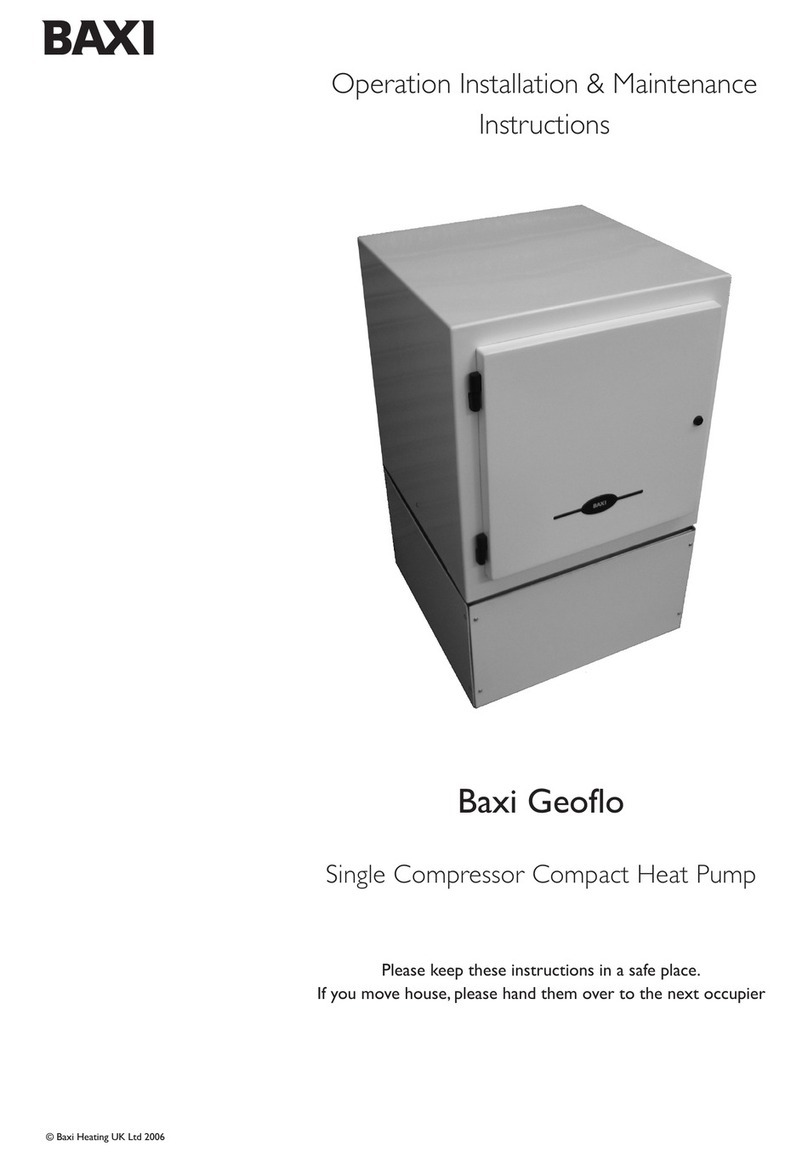
Baxi
Baxi Geoflo Operation, installation & maintenance instructions

SUMMER WAVES
SUMMER WAVES 6.5 Si Installation and user manual
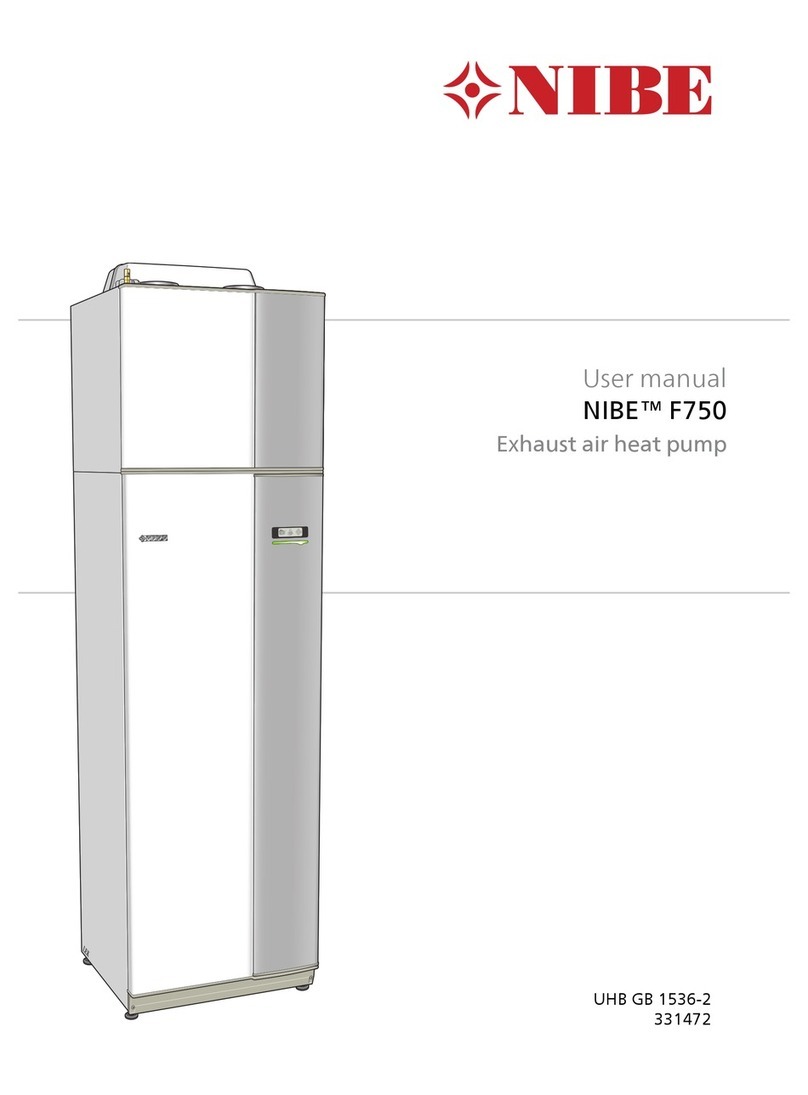
Nibe
Nibe F750f750 user manual
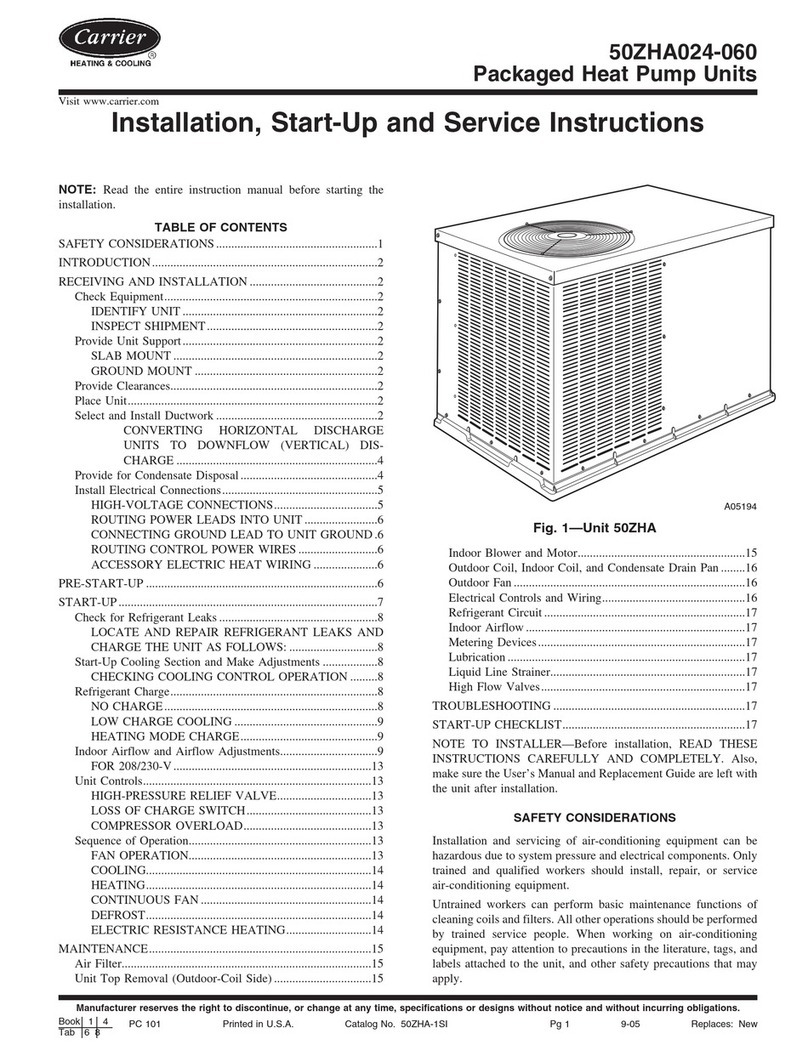
Carrier
Carrier 50ZHA024-060 Installation & service instructions
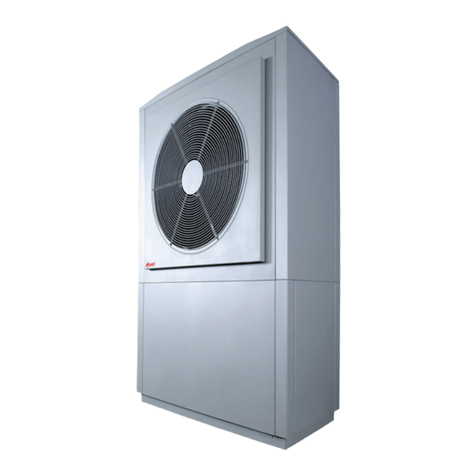
auer
auer HRC 70 32 three-phase /3 Installation and user manual
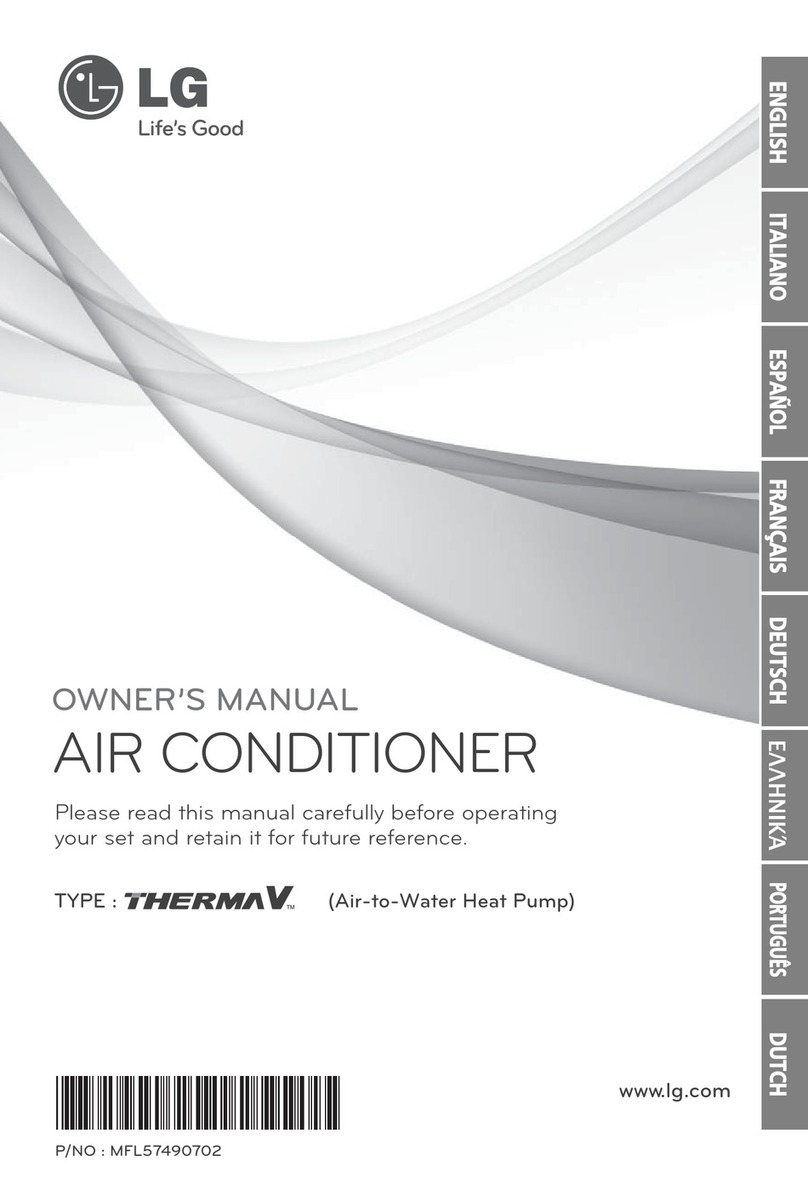
LG
LG THERMA V HN1639 owner's manual




